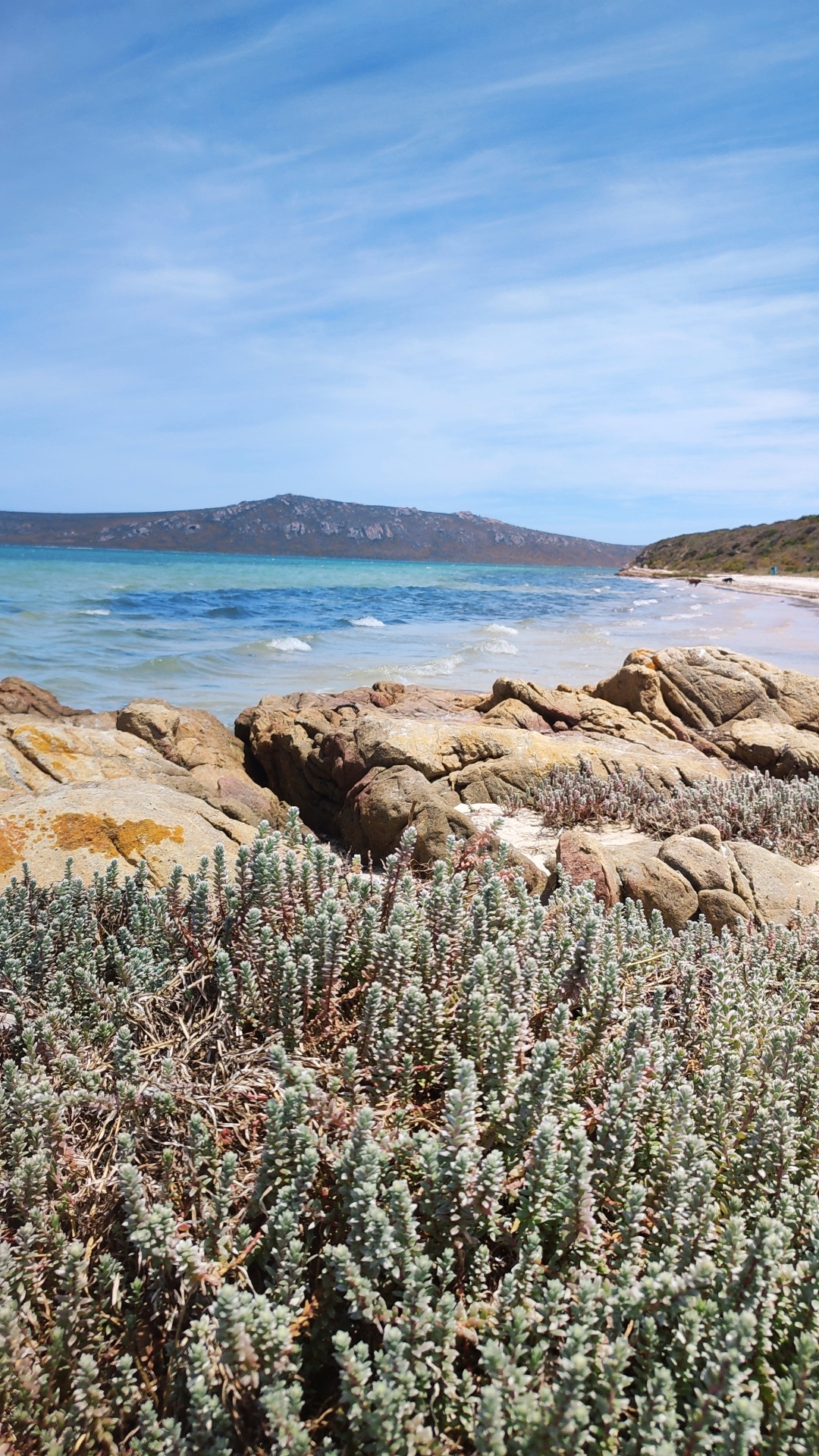
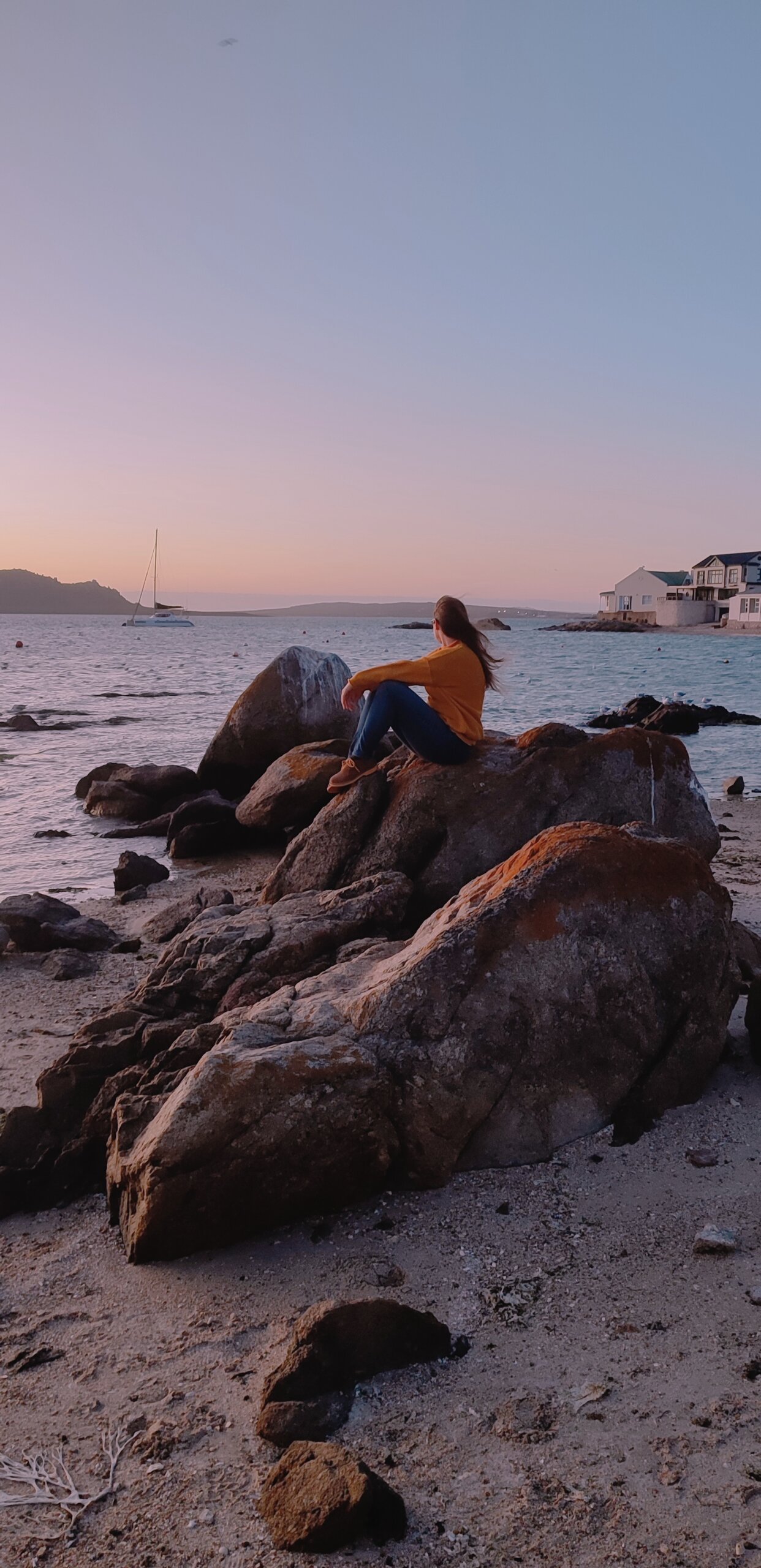
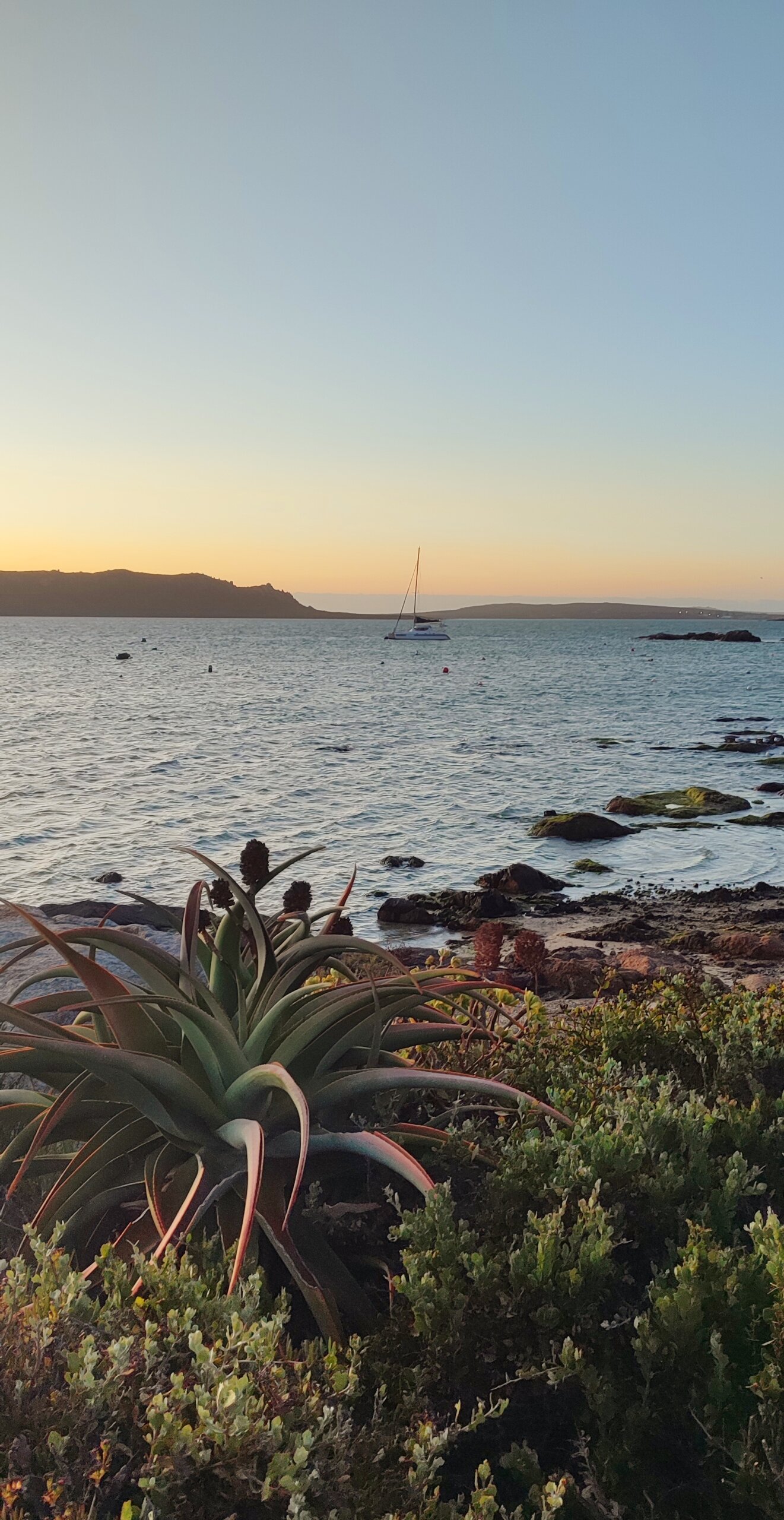
Now that I’m a Cape Town local, it’s easy and convenient to explore South Africa’s West Coast with day trips from the city or long weekends away. Perhaps, it’s because I’m still somewhat of a Joburger, but I’m surprised that the West Coast, which outlines the Western Cape northern coastline, doesn’t seem to get as many travellers as the Southern Cape Coast along the Garden Route.
Sure, they are vastly different in terms of their environment and attractions, here you will find white-washed coastal villages, carpets of spring blossoms that stretch as high up as the Tankwa Karoo, protected RAMSAR wetland sites, and the bright blue Langebaan Lagoon.
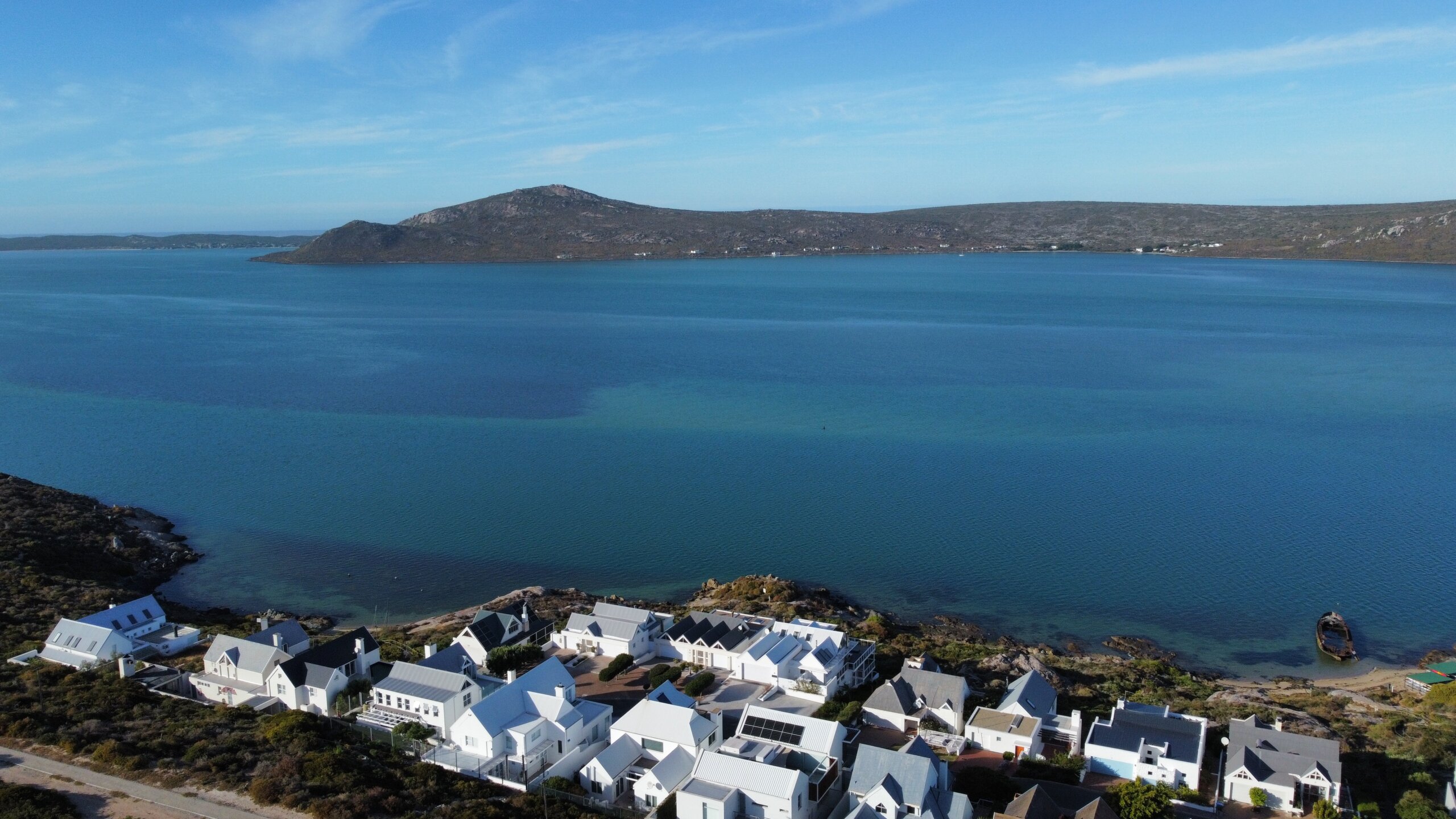
The West Coast equally serves up fresh seafood fare and foodie experiences from winelands and microbreweries to fine-dining restaurants and cheese tasting experiences at award-wining Kokerboom Kaas. The West Coast, particularly Velddrif, has its very own delicacy: bokkoms. People either love or hate these salted whole mallets that sun dry in the sea breeze and can be likened to fish biltong.
It’s true what they say though, life really does slow down along South Africa’s West Coast. And no matter whether you’re looking for day trip ideas or a longer breakaway from Cape Town, here are some ideas to help you curate the perfect getaway along the Weskus.
South Africa’s Cradle of Human Culture
The West Coast also makes up part of South Africa’s Cradle of Human Culture Route. This heritage route stretches from the world-renowned Cango Caves in Oudtshoorn to Clanwilliam. It connects several archaeological and palaeontological sites across the Western Cape, some of which date back 160 000 years. The various sites and attractions along the route trace the origins and development of human culture. They show how we, as Homo sapiens, started to change and develop socially, culturally and in terms of our behaviour. The sites show evidence of how our ancestors started to use fire for tool-making, began thinking in abstract terms, and started to eat seafood and harvest various marine resources, which many believe allowed our brains to further develop. The Cradle of Human Culture outlines human evolution, it’s a journey that outlines our ancestors’ self-discovery. This part of the Cradle of Human Culture Route includes stops at the West Coast Fossil Park – which has the world’s greatest diversity of fossils dated back to 5.2 million years – and !Khwa ttu, said to be the cultural ‘embassy’ of the San people.
Day 1: Drink stop at Darling Brewery
The award-wining Darling Brewery, in the tiny hamlet of Darling, is Africa’s first carbon-neutral brewery. The microbewery’s Tasteroom overlooks the entire brewery operation, where you can also undertake a 30-minute brewery tour (R75) combined with a beer-tasting panel of four 100ml beer tasters. The restaurant serves up pub-style food, with a beer tasting experience. It also sells beer grain crisps from the spent grain that’s used in their beer making process, making their operations even more sustainable. My favourite beers are the Belgium-style Bone Crusher wit beer and the Warlord, an Imperial IPA, though Darling Brewery also serves non-alcoholic drinks and other brews such as brandy, gin, and wine.
You might also like: Distill your own gin at Cape Saint Blaize in Mossel Bay
Engage with San history, heritage and culture at !Khwa ttu
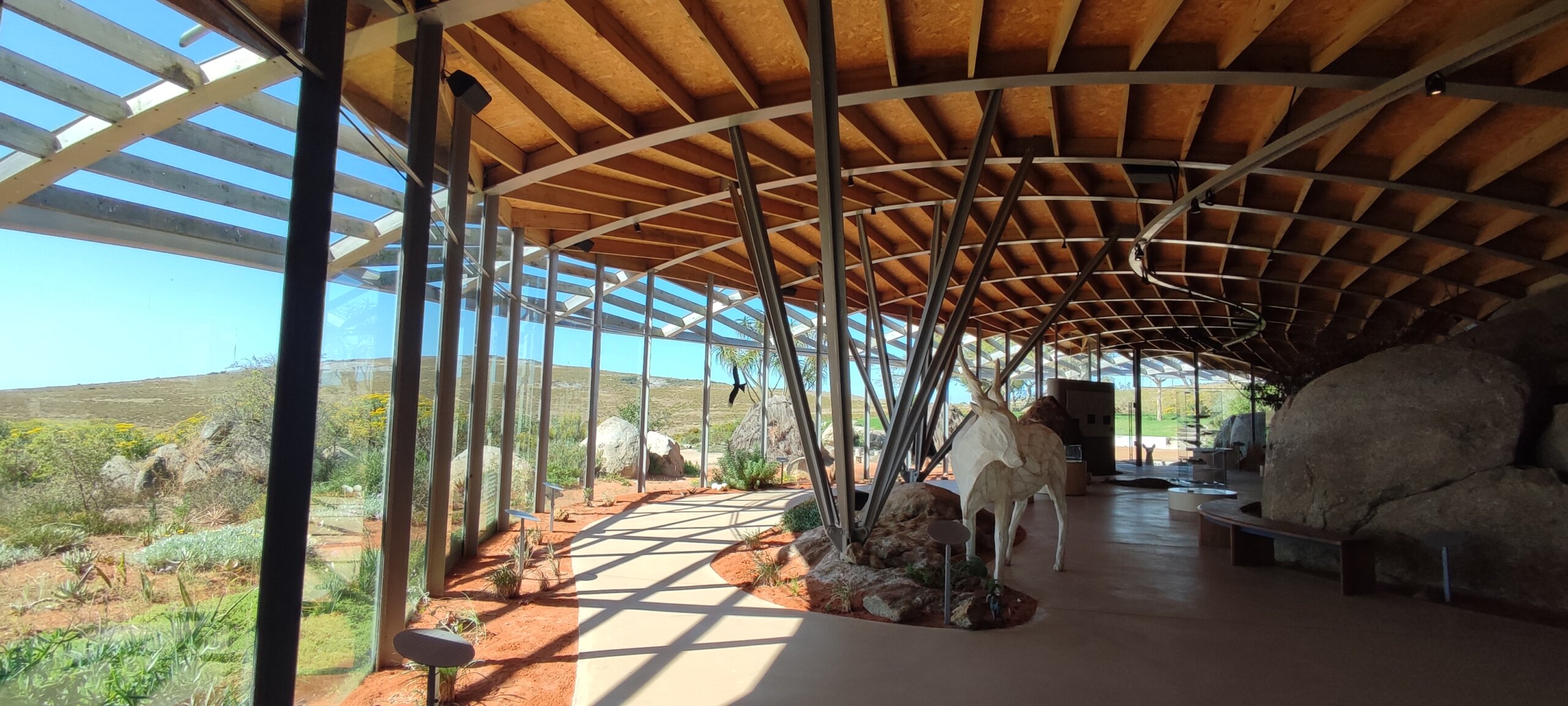
!Khwa ttu is a non-profit San culture and education centre based on a nature reserve, just 70km from Cape Town. It’s a place where San people (also known as the First People and one of the last remaining hunter-gatherer people in the world) tell their story, in their own words. Some 130 000 San still live across six southern African countries (South Africa, Botswana, Zimbabwe, Zambia, Namibia, Angola). !Khwa ttu allows the San to reclaim and share their heritage in their own way. It’s a story of humankind, of their ancient way of life, languages, art, culture and spiritual beliefs – one that we all share. The story also narrates their tumultuous past under colonialisation, Apartheid, and the impact of climate change on their changing way of life.
The !Khwa ttu San Heritage Centre is a Fair Trade-accredited museum that’s so much more than a collection of artefacts, archival items and historical photos. Some of the artefacts – including engraved ostrich eggshells, bone tools, and shell beads – show evidence of drawings and paintings that illustrate humanity’s earliest use of symbols and art, and how we started to express ourselves creatively and spirituality.
The three thoughtful exhibitions engage the body and senses, as much as the mind. They demonstrate the skills and knowledge of San from across southern Africa, while also telling the archaeological story of the origins and development of the modern mind along the southern African coastline. Explore the museum at your own pace (R80), or join one of a number of 45-minute guided tours led by a San individual (R160). I highly recommended doing a guided tour to appreciate the importance of this cultural space of learning and understanding. We did the ‘Encounters’ and ‘The Way of the San’ tours and indulged in the ‘veld pharmacy tea tasting’.
Where to eat: !Khwa ttu Restaurant
Keeping in line with its ethos, the restaurant explores San food culture by incorporating indigenous plants into its bistro-style dishes. It’s housed in a refurbished farm house and opens up onto the lawns and a plant-entwined pergola. As part of the ‘food from our ancestors’ project, the products are grown or gathered at !Khwa ttu or sustainably sourced from small-scale, family-owned operations, local producers and artisanal makers. As the seasons change, so do their dishes, which allows patrons to indulge in the best of each harvest season. You won’t find mass-produced items here, Coca Cola products are replaced with home-brewed cordials and kombucha that’s infused with Buchu and rooibos. The menu curates a selection of wholesome, freshly-prepared food and incorporates suppliers with a low carbon footprint. The restaurant’s foremost intention is to tread lightly on the land, just as the San have done for millennia.
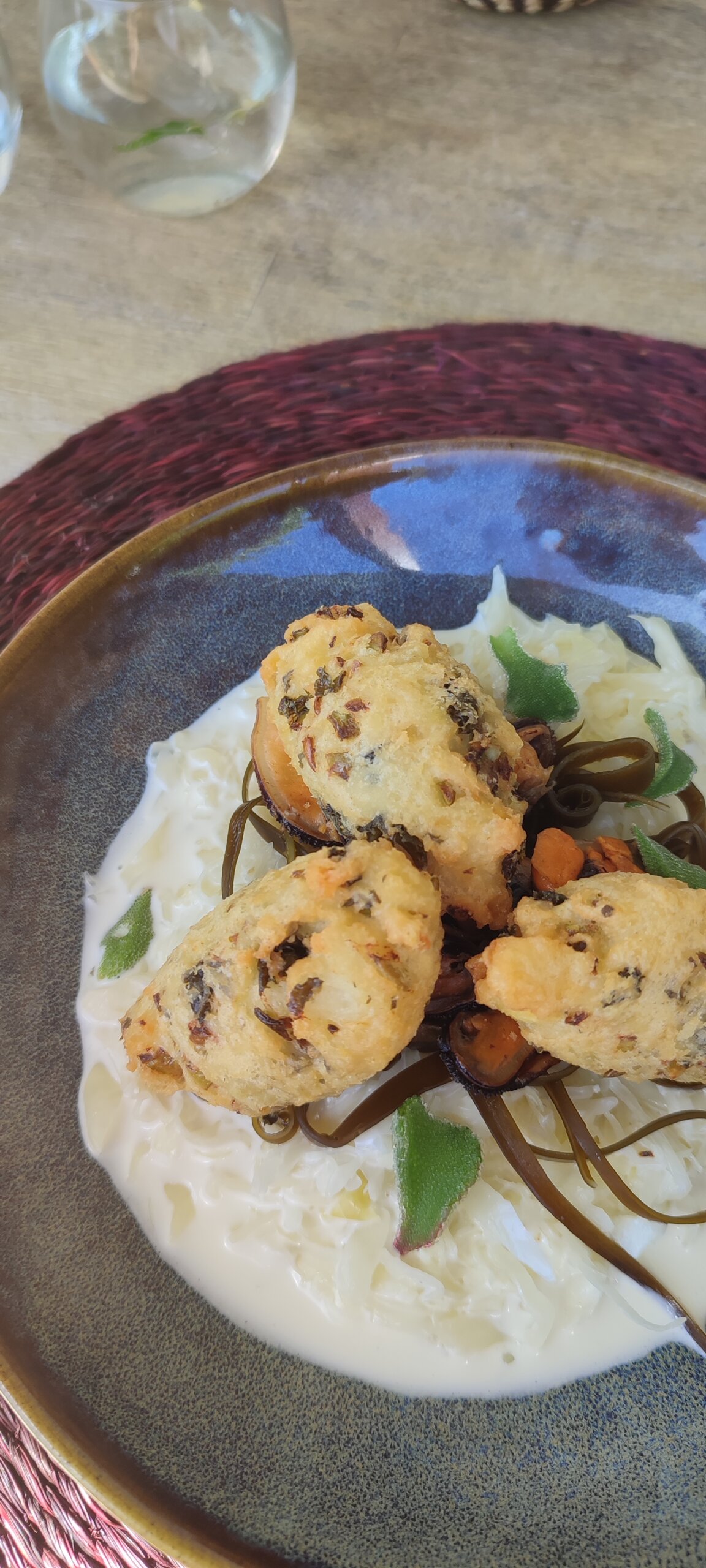

I indulged in the West Coast Mussels with pickled white cabbage, smoked cream, kelp ribbon nori (harvested from the coast) and spekboom fritters, which was washed down with a sceletium and honeybush kombucha. Sceletium tortuosum is a mood-altering plant that’s been used in traditional medicine for centuries. It was here, while sipping on my kombucha, that I learned South Africa is campaigning to become the protected designation of origin for sceletium, much like rooibos.
An eco-friendly stay at !Khwa ttu
There’s something magical about waking up at !Khwa ttu with views of Cape Floral vegetation disappearing into the Atlantic Ocean on the edge of the horizon. Their plastic-free, solar-powered accommodation offerings range from elegant farm-style cottages to a rustic bush house and luxury glamping tents with king-size beds and open-air showers. All of which make use of fire wood from the nature reserve’s alien vegetation clearing programme. During your stay you can also undertake some of the walking pathways or mountain biking trails through the nature reserve.
Day 2: Traverse the West Coast National Park
Without a doubt the best time to visit the West Coast National Park is during flower season, between August and September. During these two months, visitors to the park will see a wide variety of flowers on display, from daisies to bulbs and landscape of flowering fynbos and veld. Large areas of flowers can be seen in the Seeberg\Mooimaak and Postberg areas, the latter is only open to the public during flower season. I visited the park on two consecutive weeks and was stunned to see how much the colourful display had changed within a matter of days. It’s best to come early in the day, and during the week, as weekends get busy. However, the park is equally enthralling at any time of year and you are likely to see Bontebok, zebras, ostriches and perhaps even a leopard tortoise just as we did.
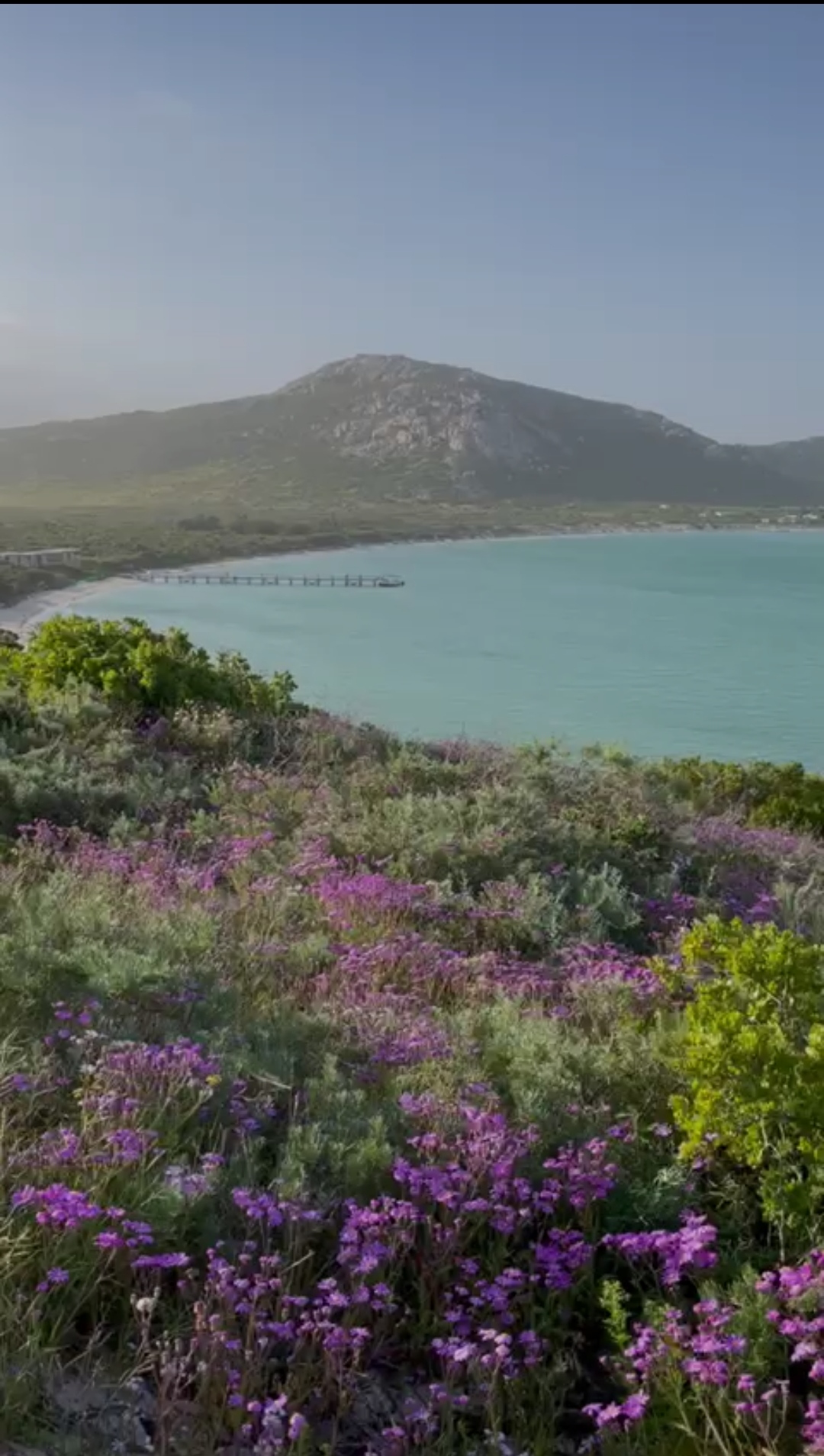
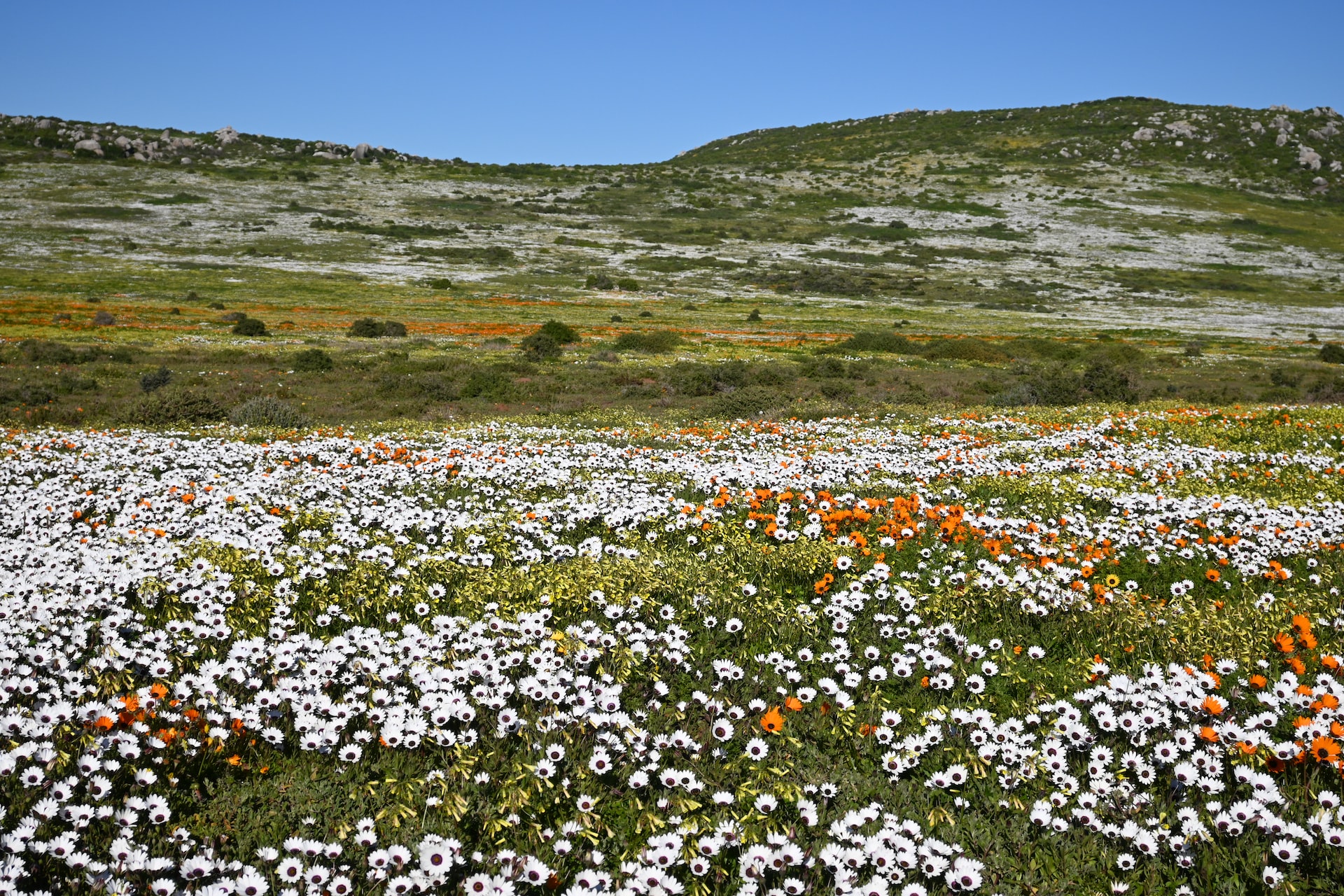
Mountain biking: 30km and 70km cycle route; 13km and 17km mountain bike route.
Bird watching: scout for the more than 250 bird species at one of the four bird hides. Over a quarter of South Africa’s endemic bird species are found here, along with migratory birds from as far as Russia. Some of the salt marshes can be seen from Geelbek bird hide.
Whale watching: Southern Right whales can be spotted from the Tsaarsbank section of the park between August and September. Tsaarsbank is characterised by its large boulders that make look out points in the direction of Saldanha Bay. It’s a romantic spot for a picnic and there are braai facilities too.
You might also like: Whale watching at De Hoop Nature Reserve.
A unique stay in a houseboat at the West Coast National Park
There are five fully-equipped, en-suite cottages with fireplaces within the nature reserve (from R1335/per night). The most unusual stay, however, must go to the two, well-equipped houseboats anchored in the calm turquoise waters of Langebaan Lagoon at Kraalbaai. The two-bedroomed, six-sleeper houseboat offers an intimate getaway, while the double-storey, 22-sleeper houseboat is better suited for family or larger getaways; it comprises of nine bedrooms, four bathrooms, two lounges, two kitchens and decks on both levels.
Day 3: Explore 5.2 million years of history at the West Coast Fossil Park
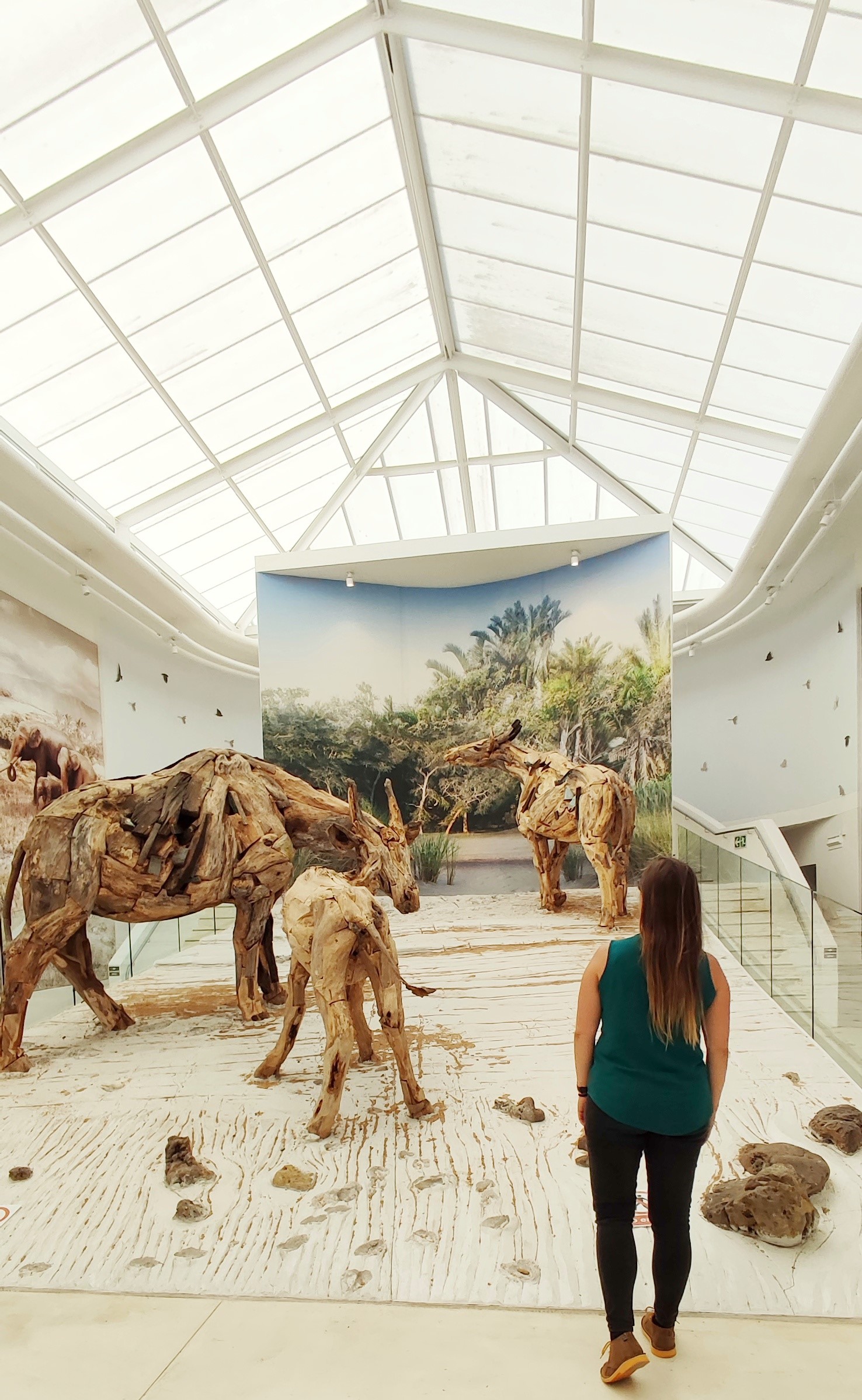
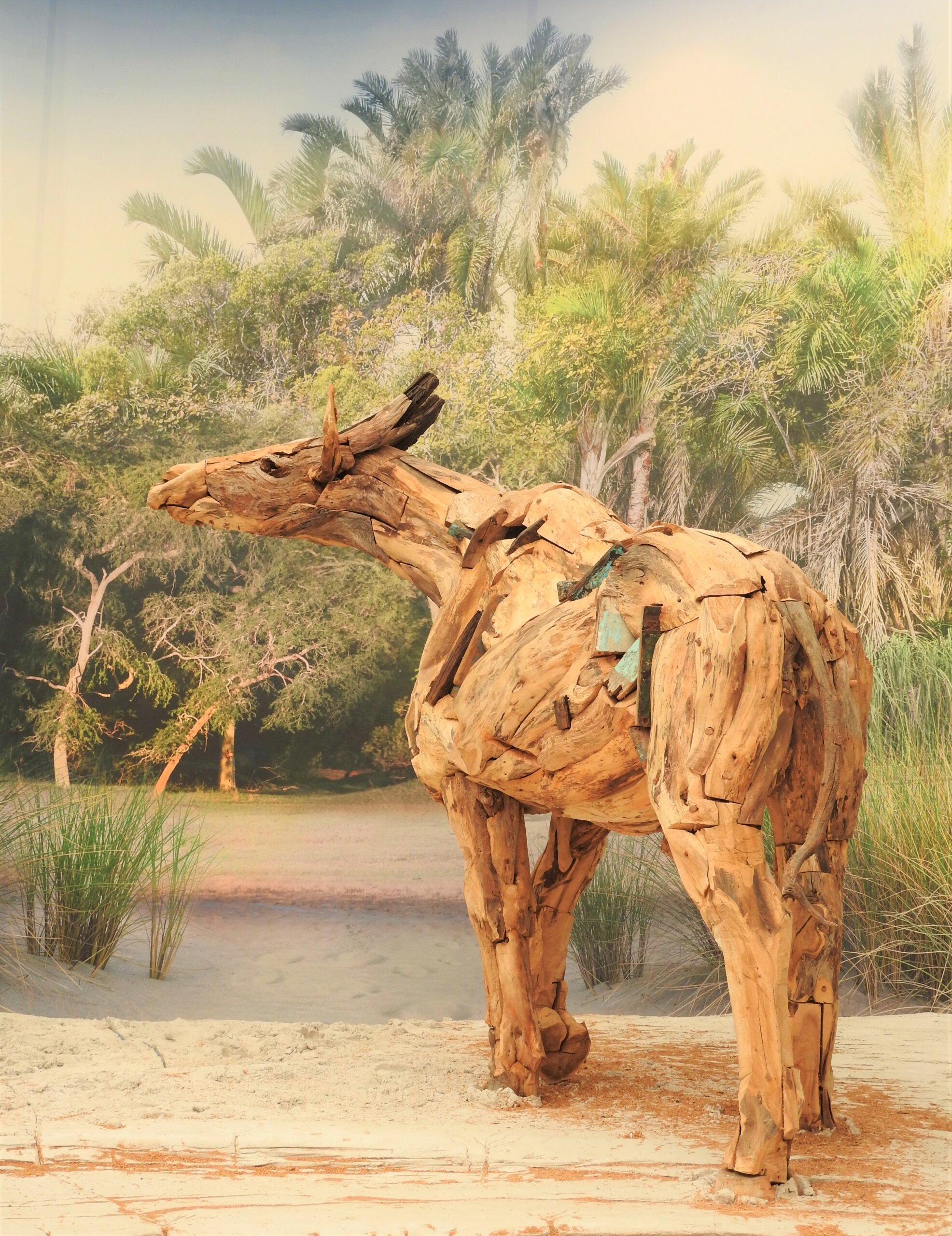
The West Coast Fossil Park showcases the world’s greatest diversity of fossils dated back to 5.2 million years ago (around the Miocene/Pliocene transition, I am told). There are fossil remains of some 280 animal species, many of which are now extinct. The fossil site is evidence of a mass extinction, where at least 40% of plant and animal species became extinct within a short period believed to have been as a result of flooding.
You have to use your imagination to imagine what South Africa’s West Coast looked like back then, when it formed part of an estuary of the ancient Berg River. Some 5.2 million years ago, it was a humid, sub-tropical rainforest and vastly different from what it looks like today. Scientists discovered this by studying specimens of preserved plant pollen.
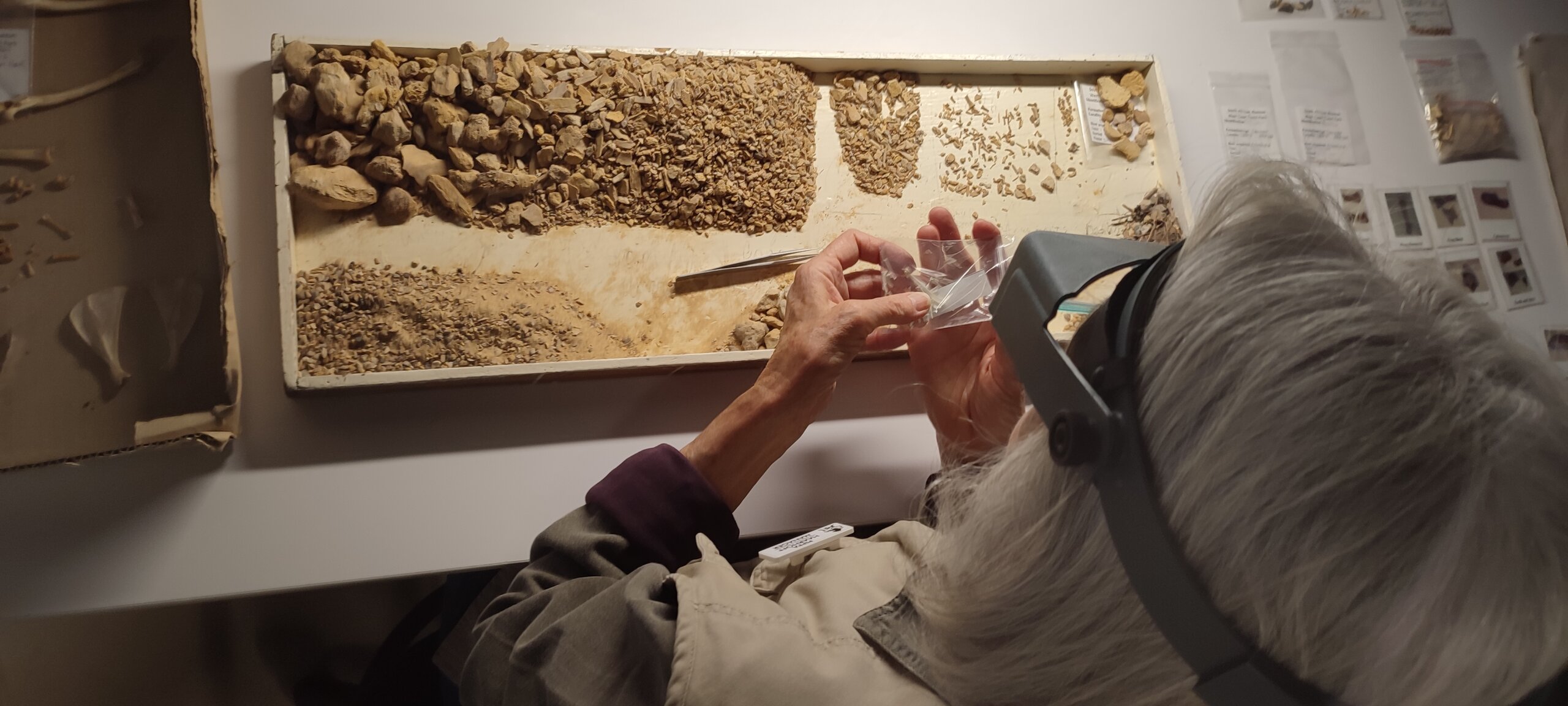
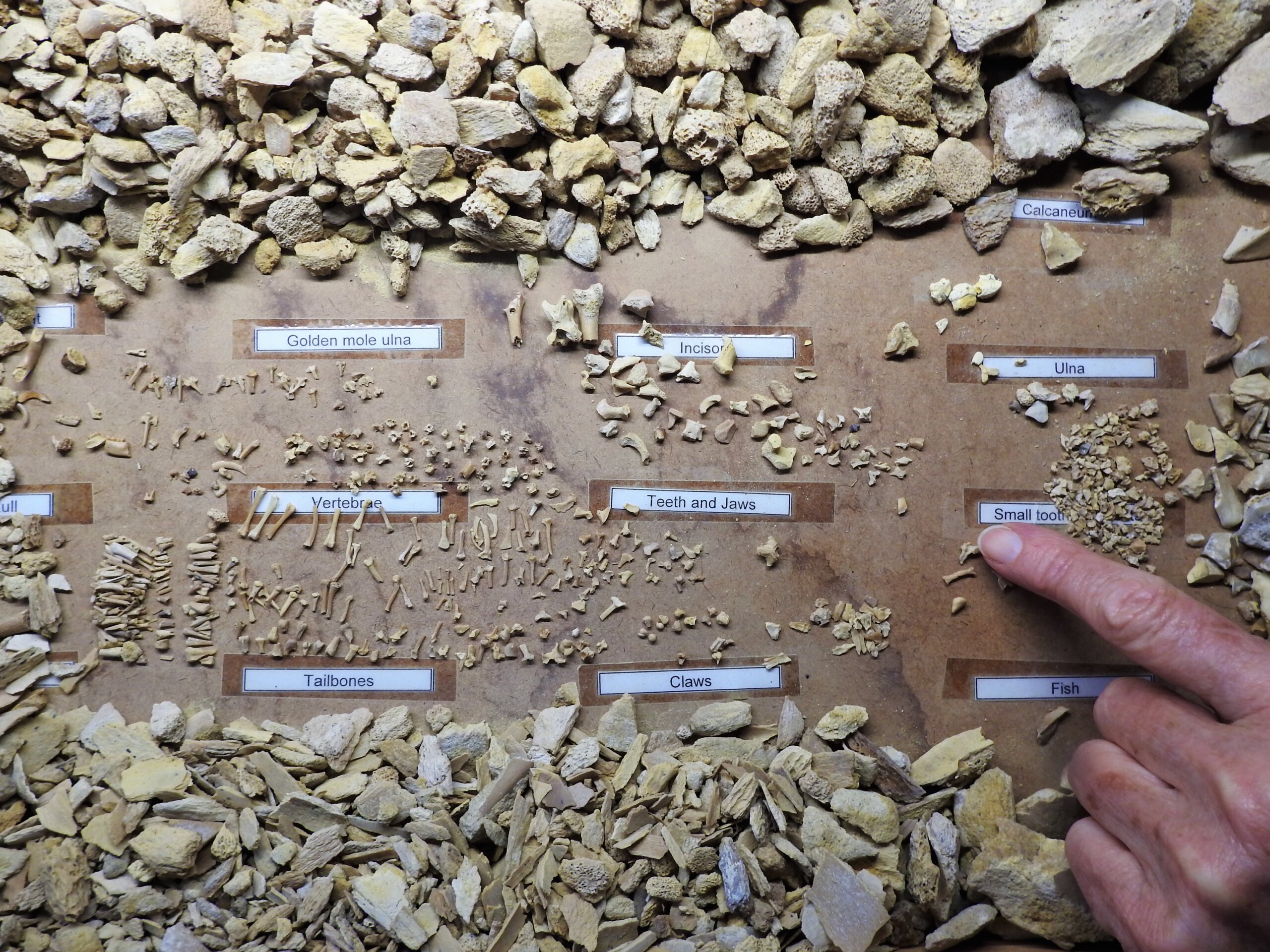
The landscape was home to three species of elephants, sabre-toothed cats, African bears, giant pigs and wolverines which are no longer found in Africa. The smallest mammal fossil to have been found is ear bone of a golden mole. One of the most interesting specimens are the short-necked giraffes (called Sivatheres). Over 500 Sivathere fossils were uncovered here, which shows that adults weighed up to 2 tonnes. You can see life-size models at the world-class exhibition centre, alongside interactive, multimedia installations, fossil displays, and artistic renditions that bring to life what life must have been like back then.
Besides the 100 mammal species that were uncovered here, another timeline emerged when marine fossils were discovered even deeper beneath the ground. These date back to 10 millions years ago when the area was covered by an inland sea. They include a whale jawbone (the largest fossil found here), three penguin species, 16 shark species which were identified by their teeth (including an extinct megatooth shark), three bony fish species and 60 other marine invertebrate species.
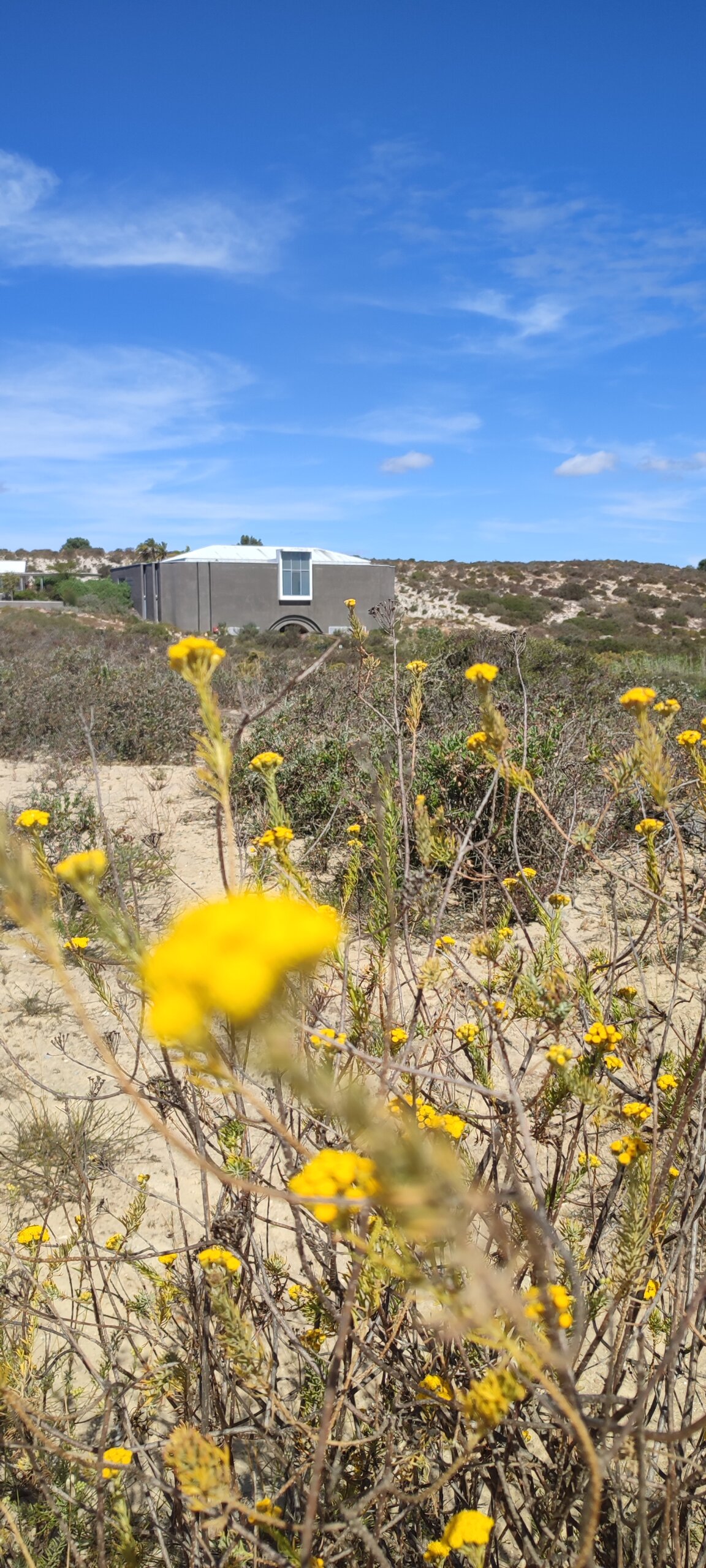

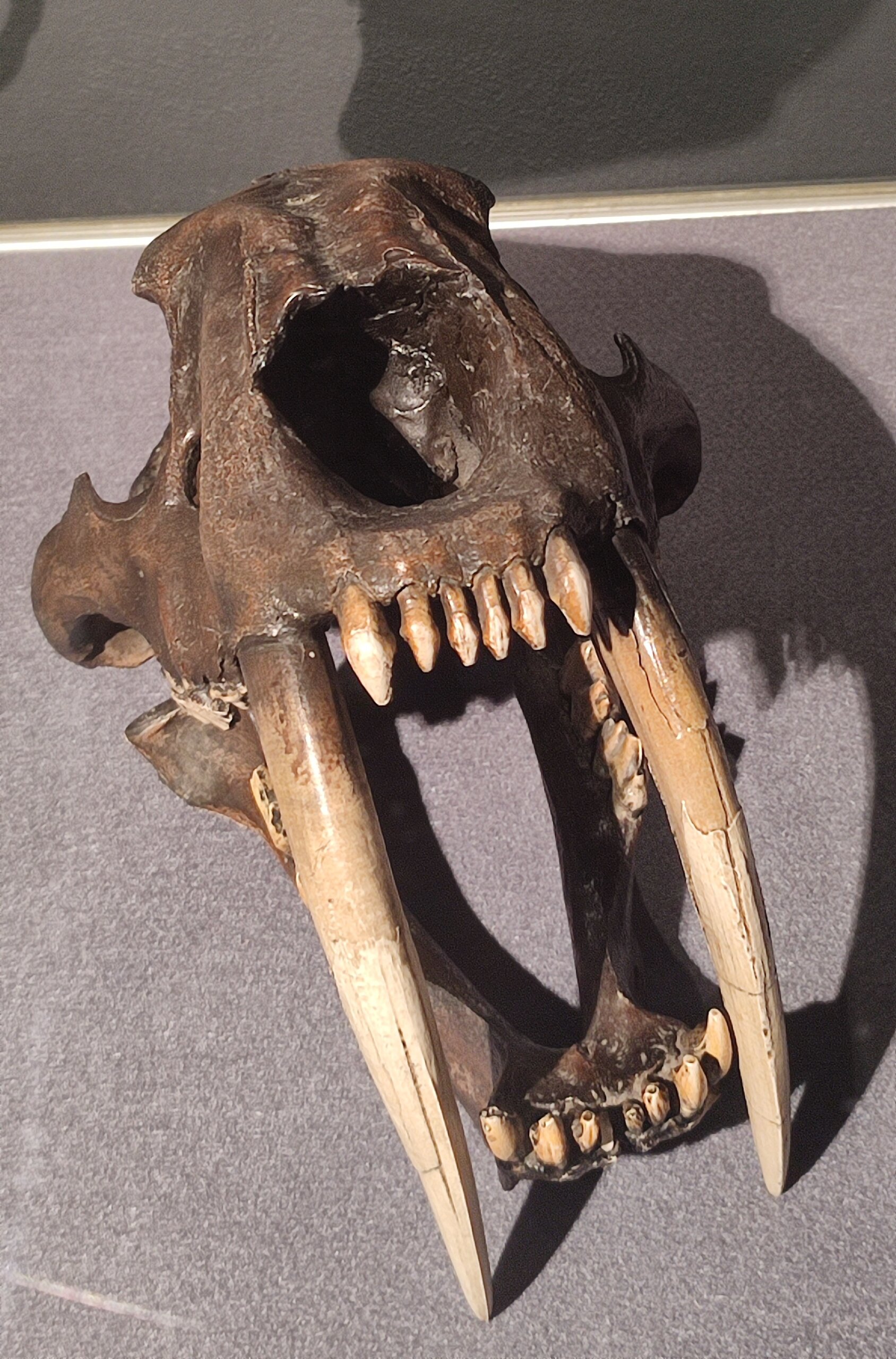
As a nerd at heart, it’s the kind of school field trip I would have loved; children and adults alike will be intrigued by the informative plaques and photographic displays at the state-of-the-art visitors centre. In some cases you can even run your hands along a fossil. It’s no surprise then that the West Coast Fossil Park is a national heritage site that has been ranked as one of the best palaeo-tourism destinations and learning centres in the world.
In fact, The West Coast Fossil Park is one of a handful of sites in the world where fossil remains can be seen in situ, as part of a palaeontological dig site. You can walk around the dig site and view it from up close on a guided tour. The fossil discovery is so large that it hasn’t even been completely uncovered yet. There are no sites in South Africa that compare to the fossil park in terms of the abundance, age or species richness of the fossils (Exhibition R50, Tour of the dig site R100).
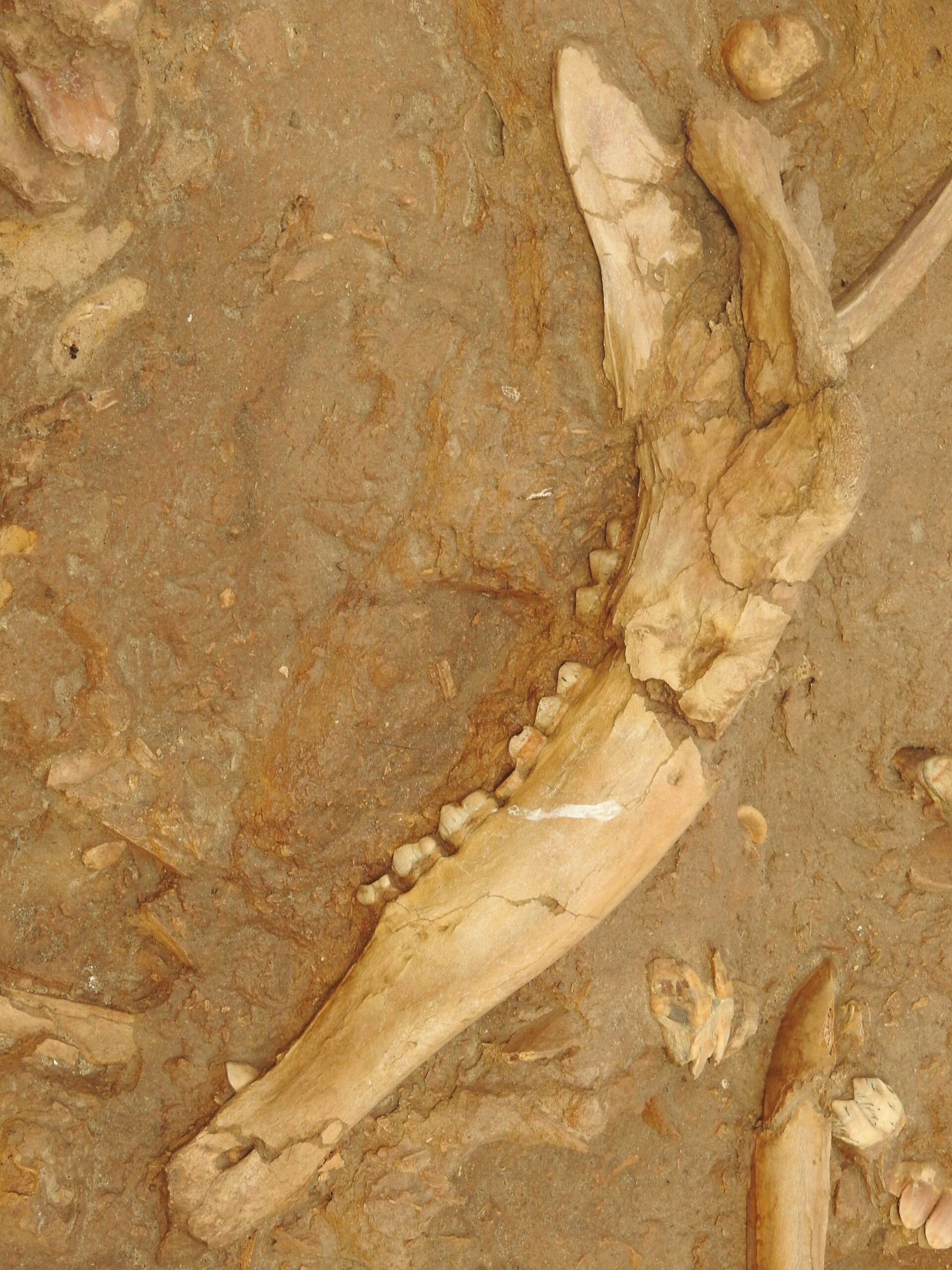
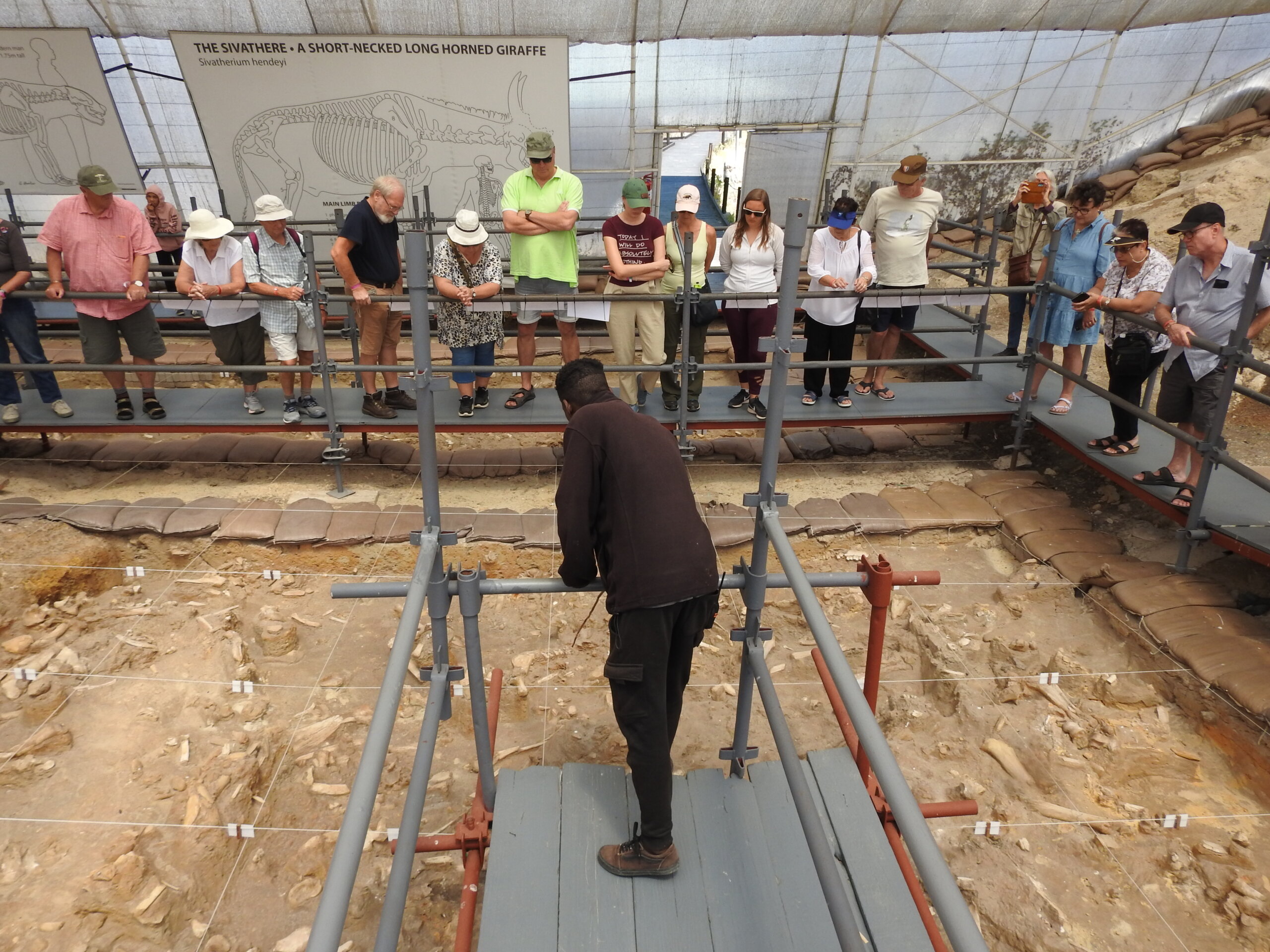
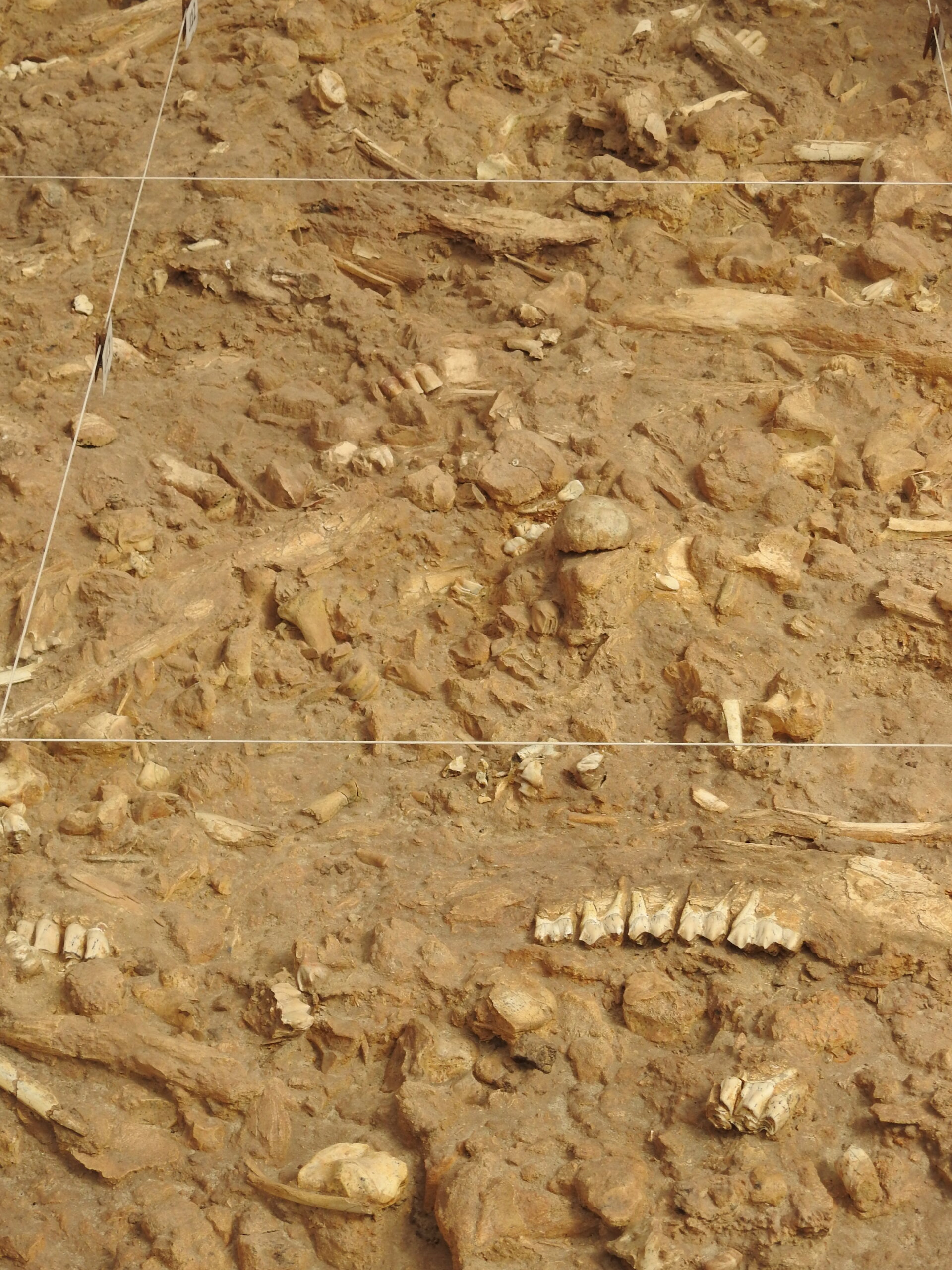
While you’re here, other things to do at the West Coast Fossil Park include mountain biking (R50) – there are four mountain biking trails from 3km to 10km in length – which visitors can also choose to walk (R30). The gift shop sells a variety of books, educational toys and themed gifts that any science-lover and history-fanatic will delight in. And to think that it’s right here on our very doorstep. The West Coast Fossil Park is 30 minutes’ drive from the West Coast National Park or 90 minutes from Cape Town. This makes it very easy and convenient to visit on a day trip along the West Coast.
Eat and drink: The Farmers Craft Market and West Coast Fossil Park restaurant
The restaurant at the West Coast Fossil Park is managed and run by the West Coast Chef School, which trains young chefs and hospitality students. It was heart-warming seeing students learning the trick of the trade in a hands-on manner, from welcoming us front of house to preparing delectable meals. There was so much to choose from, like crispy prawns and seafood paella to tacos and steak. There were also open sandwiches, burgers, pizzas and quesadillas, which will appeal to little one’s appetites. We indulged in the spinach and mushroom rotolo – a home-made pasta roll filled with spinach, mushroom and ricotta, and slathered in a homestyle tomato sauce with pecorino shavings.
In recent months, the West Coast Fossil Park’s farmers market has become very popular with visitors and those living nearby. It’s hosted on the second last Saturday of each month (9am – 2pm) with many stalls run by farmers, bakers, chefs, cooks and artisans from the surrounding coastal villages selling home-made food from their age-old family recipes and West Coast delicacies. Plus there’s always live entertainment and a variety of activities for young and old alike.
Stay at the historic Farmhouse Hotel in Langebaan
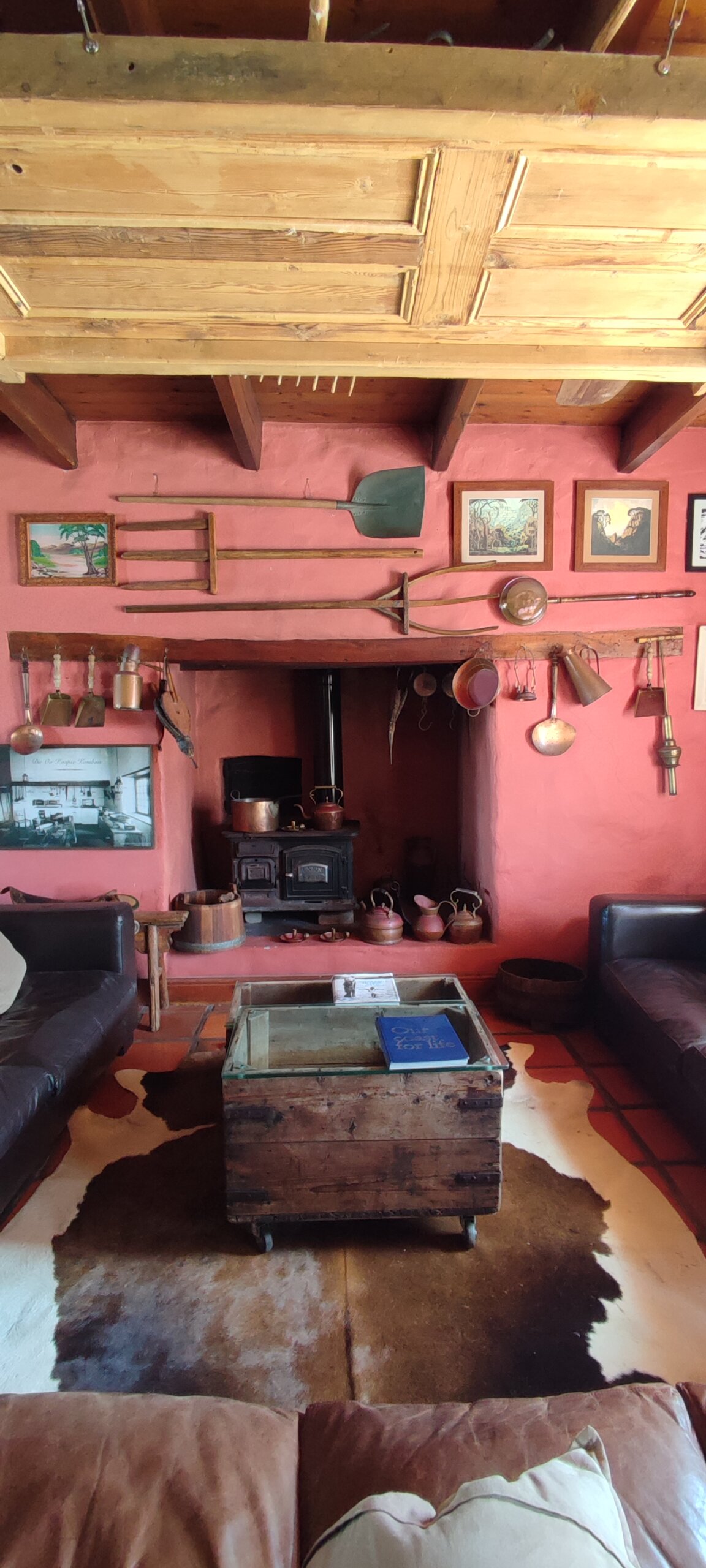
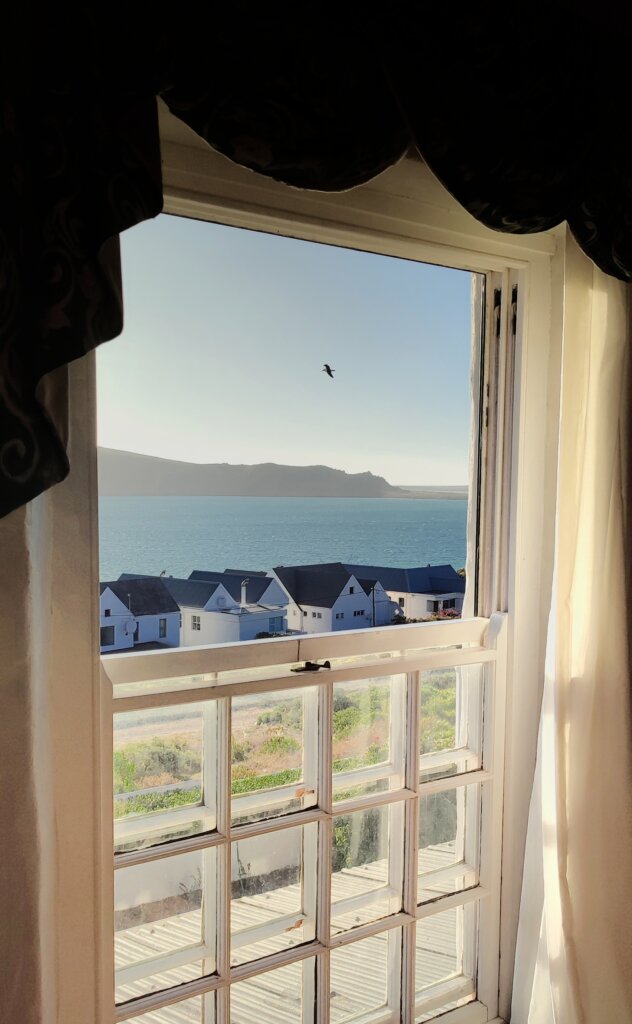
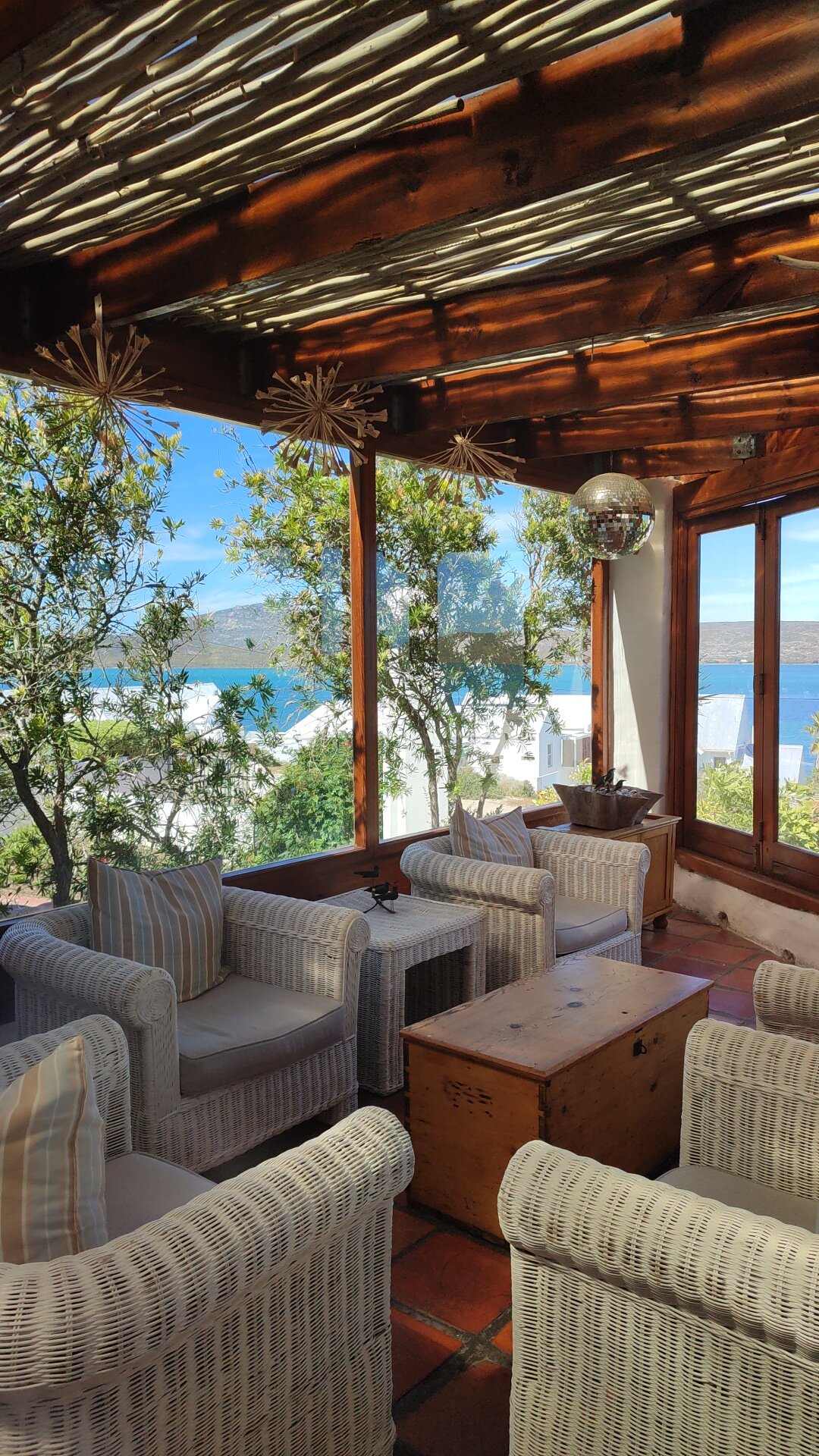
For a coastal farmstead experience that overlooks the tranquil Langebaan Lagoon, The Farmhouse Hotel is unbeatable for its alluring views of the untamed coastline. A walking path crosses in front of the property, along the ridgeline to a wooden lookout deck over the reserve. The solar-heated swimming pool with its lilos and the parasoled stoep spill out onto the garden. A high tea of scones served with preserves, whipped cream and cheese is served here daily. The light-filled celebration room is ideal for a cuppa tea, reading on the couch, or remote working if it’s windy.
The pink lounge is draped in historic artefacts from days gone by with farming tools, kitchen implements and paintings hanging on the walls side by side, as well as a billiards table and board games set up. The lounge leads into the Legends Bar that tells the story of the building’s 19th-century history through the ages with framed newspaper cut outs.
We stayed in The Farmstead – a spacious two-bedroom, five-sleeper loft apartment with a large dining area and lounge punctuated with skylights and sash windows that open up onto the blueness of the lagoon. For a private wood-fired hot tub out on the porch, you need to book the two-bedroom, four-sleeper Frank Wightman Cottage. Certain rooms accommodate fur babies, if you’re looking for pet-friendly accommodation in the Western Cape.
The Farmhouse Hotel is running an ongoing special with a 40% discount for mid-week stays.
Day 4: Other things to do in Langebaan
The Langebaan Lagoon is a Marine Protected Area that’s divided into three zones. Water sports, swimming, recreational fishing and boating are allowed in the Controlled Zone. Other parts of the lagoon are classified as a RAMSAR wetland to protect the lagoon’s sensitive ecosystem, flora and fauna.

Anyone will tell you that the wind is born here. That’s why Langebaan is the kite surfing capital of South Africa and one of the most popular kite surfing destinations in the world, with very reliable wind from October to May. If you’d like to try your hand at kite surfing, windsurfing, wing surfing (pictured below, where you hold an inflatable foil while on a windsurf board), stand up paddle boarding or kayaking, Windtown is the place to go for private or group lessons and gear hire. It’s best to book ahead of time during peak season as people from around the world flock here for a few weeks at a time.
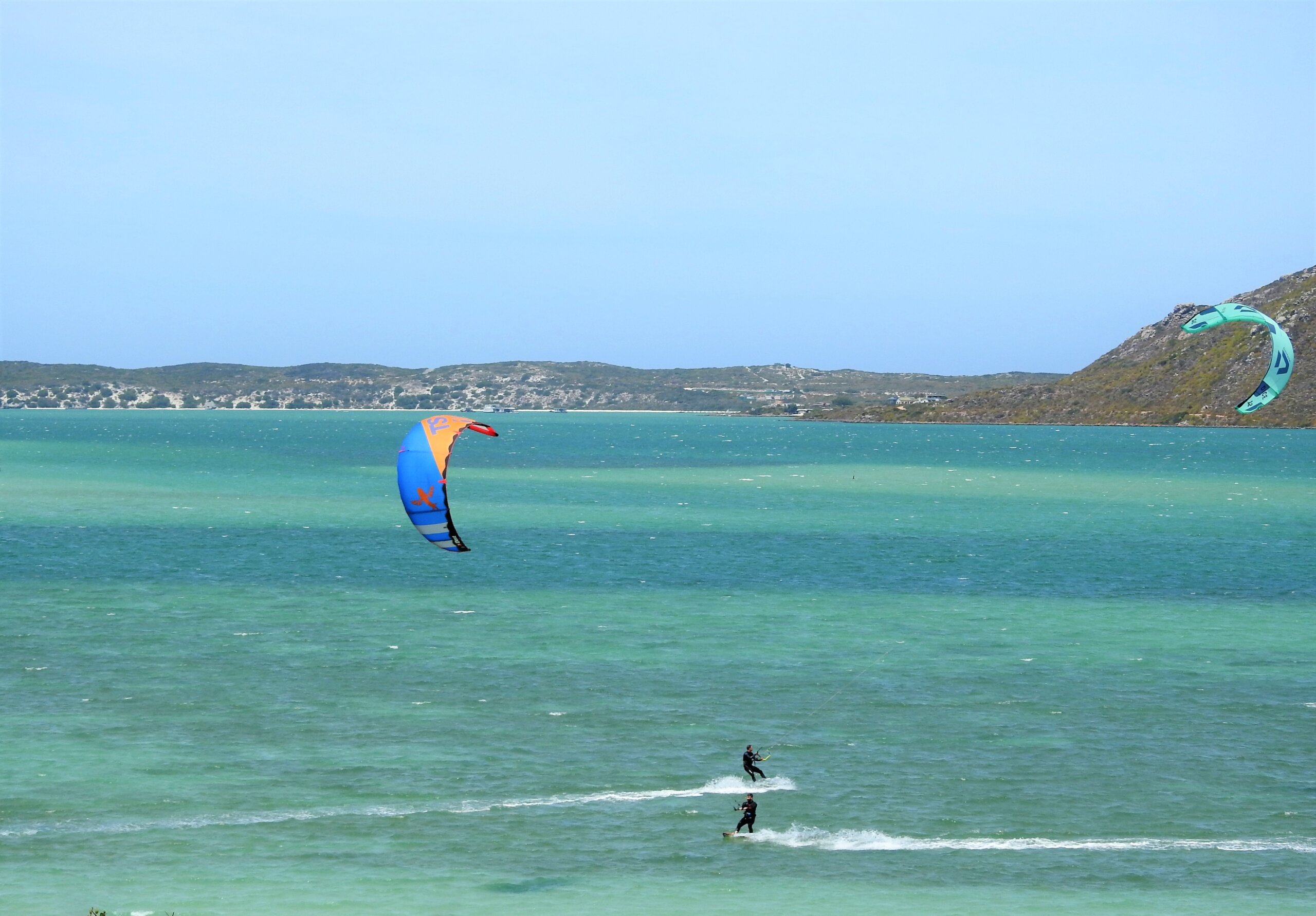
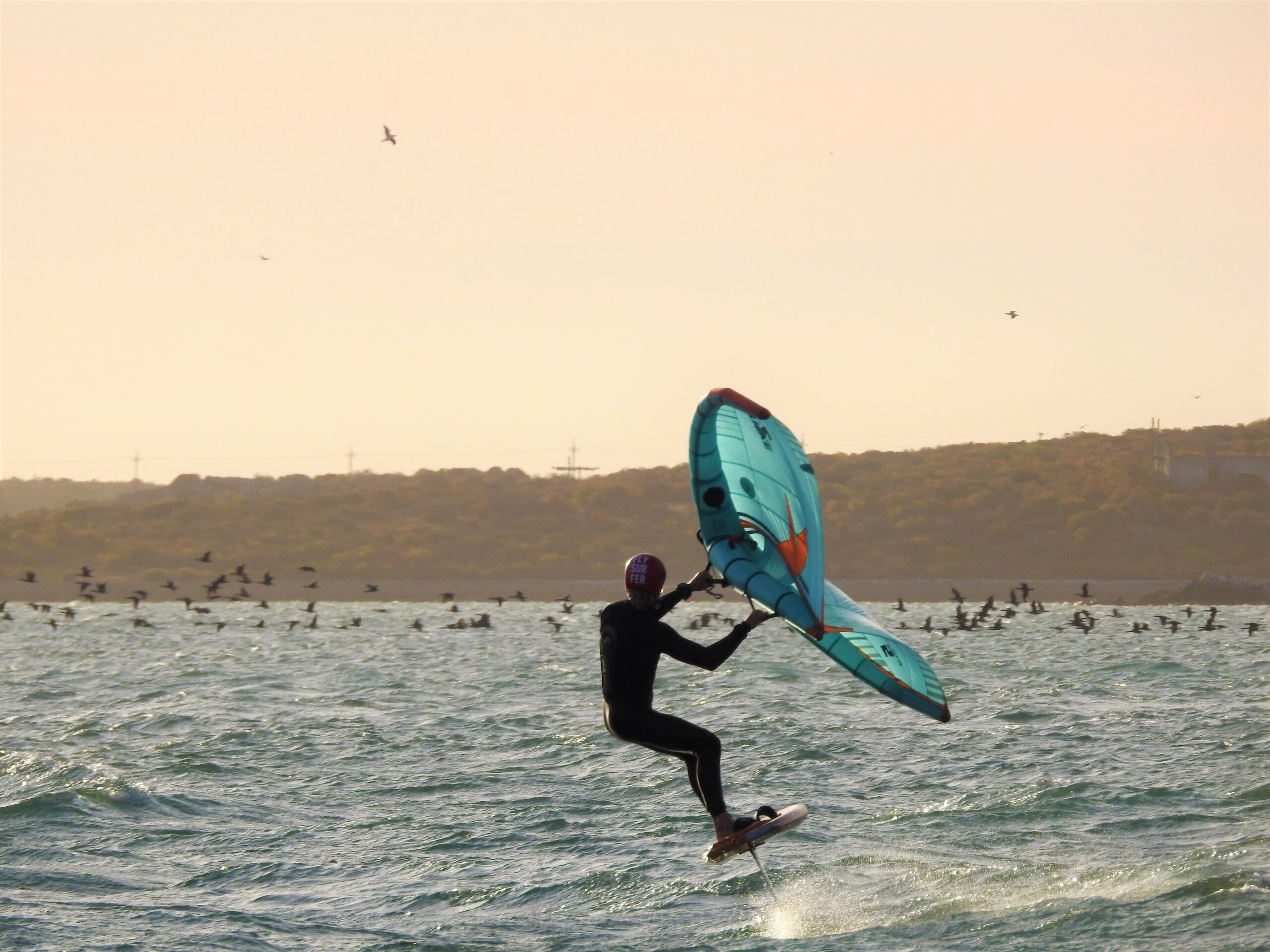
Where to eat in Langebaan: La Petite Maison
La Petite Maison is the Farmhouse Hotel’s French-inspired restaurant with West Coast flair that’s run by husband-and-wife duo Yohann and LaRetha. Yohann studied at the International Hotel and Culinary Arts School in La Rochelle, in eastern France, while also learning from his father at their family hotel restaurant Les Jardins du Lac, which received a One Star rating in the Michelin Guide. And it shows, as it was the best restaurant meal on our trip.
Not only because of the astute attention to how ingredients, flavours, colours and textures combine to create a beautifully-plated gastronomical experience, but also because the menu is an assortment of locally-sourced, seasonal produce with a strong focus on fresh fish, seafood and crustaceans. After all, Yohann grew up along the French coastline mastering marine cuisine.
Meat lovers will find much to ‘wow’ about too, as the menu serves Karoo lamb shank and other meat options, alongside award-wining cheeses from Kokerboom Kaas (cheese) in nearby Velddrif. Even if you’re not staying at Farmhouse Hotel, book dinner at this blue-and-white establishment, and reserve a table near the open fireplace or looking out onto the lagoon.
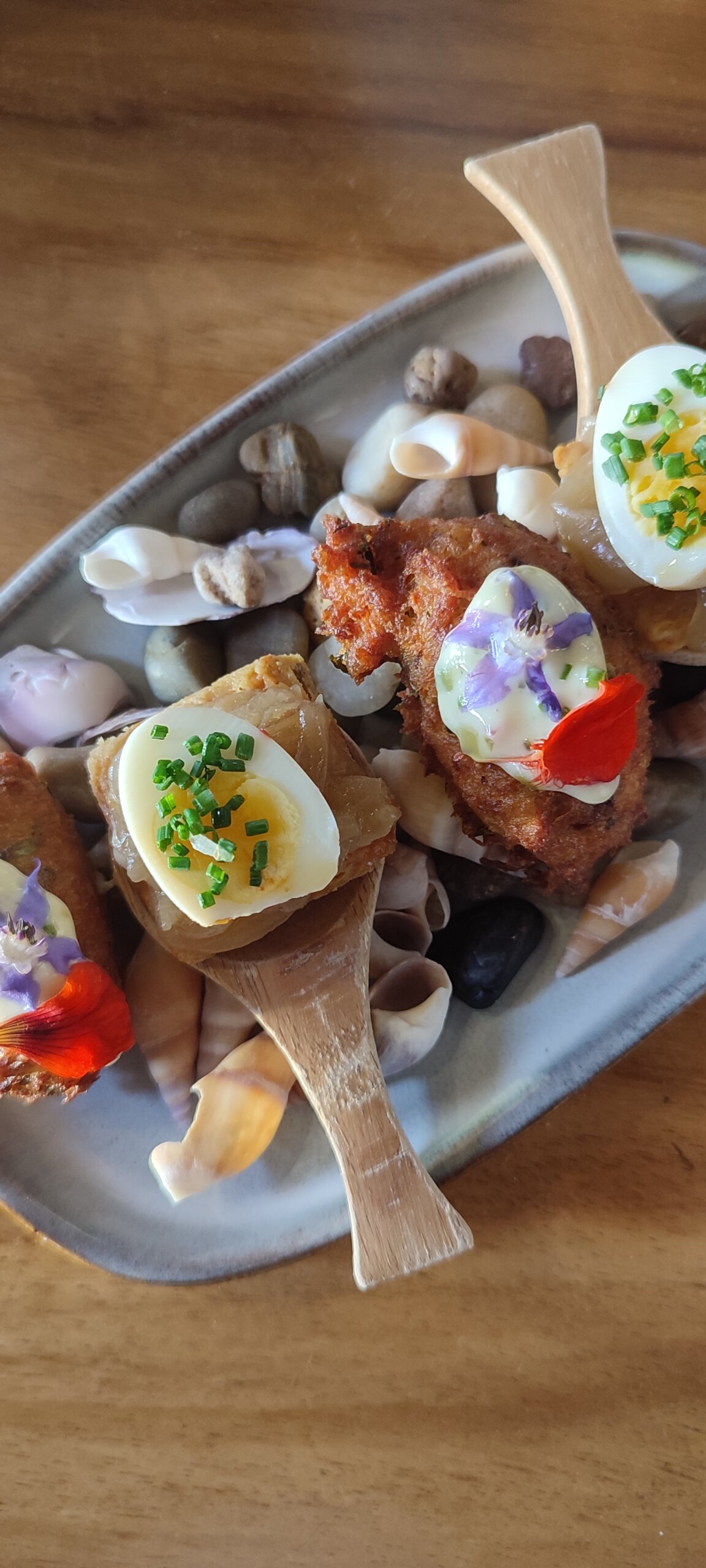
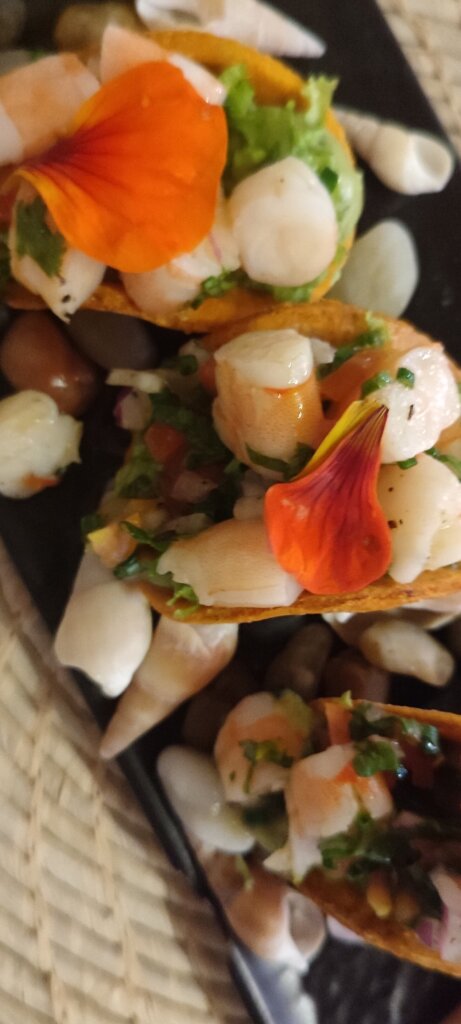
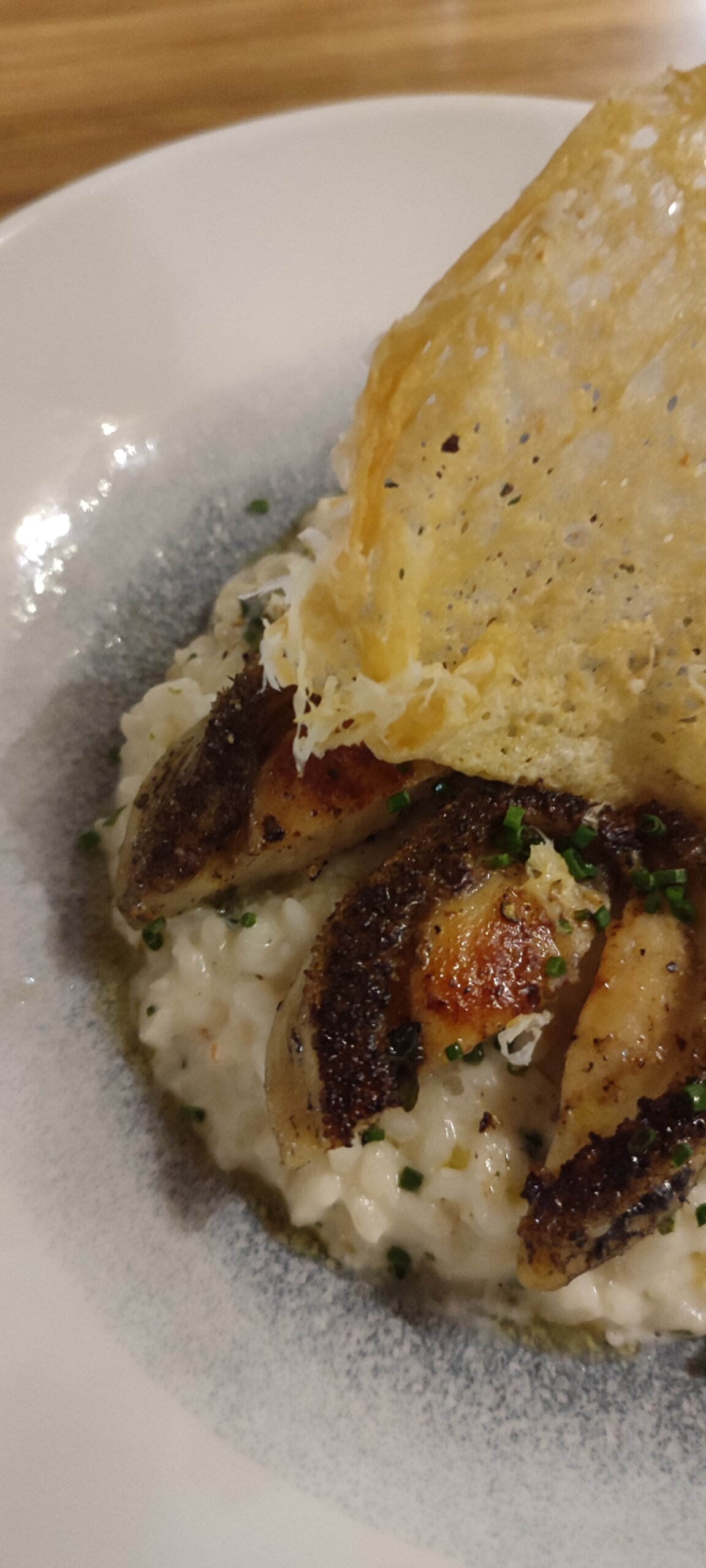
Day 5: Paternoster
Spend the day relaxing in the white-washed fishing village of Paternoster, walking along the beach and exploring the eateries along the waterfront.
Day 6: The Cape Camino through the Cape Columbine Nature Reserve
The Cape Camino is a 650-km walking route across the Western Cape that’s modelled on Spain’s Camino de Santiago. The community hosts walkers in small towns, rural communities and farmsteads along the way. The West Coast makes up 250km of the route across Langebaan, Saldanha Bay, Jacobs Bay, St Helena Bay, Paternoster, Velddrif, Elands Bay and Dwarskersbos. It traverses mountain slopes, cuts through farmlands and vineyards, meanders alongside rivers and on the banks of estuaries, makes its way through fynbos thickets, historical settlements and along coastal towns before making its way through Cape Town suburbia to end at Table Mountain.
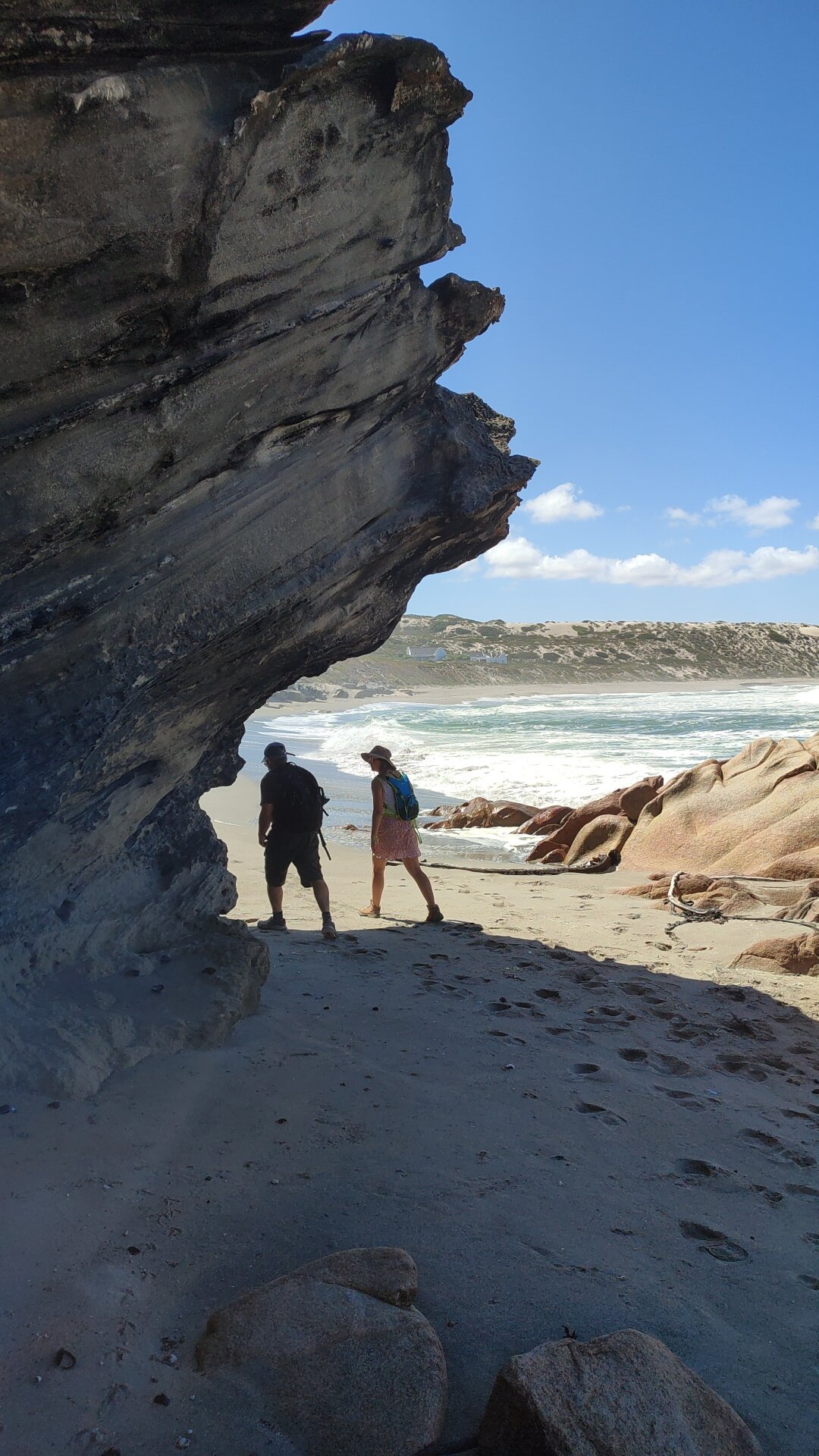


People choose to walk the Cape Camino for many reasons, whether it’s to heal emotionally, reconnect with their spiritual practice, be in nature, bond with family and friends, or to take a break from regular life. Everyone is encouraged to ‘Walk your way’ along the Cape Camino. Some walk the Cape Camino in silence as a form of meditation. It’s possible to undertake parts of the walking route on a day walk (just as we did). Others do so over a weekend, a wee or do the entire distance over 36 days.
We joined a day-long section from Paternoster through the 263-hectare Cape Columbine Nature Reserve in the direction of Jacob’s Bay. This section of the walking trail starts with a hearty, locally-sourced breakfast at the Sea Shack, which was designed by artist Dianne Heesom Green and is found right on the water’s edge. The A-frame, wooden huts are solar-powered, while the communal kitchen in this self-catering establishment runs on gas. From here a guide walks you through the reserve, stopping to point out the flora and fauna along the way, as well as important geological features. We were fortunate enough to be accompanied by Sanet Langenhoven, the passionate owner of Sea Shack and a Cape Camino host.
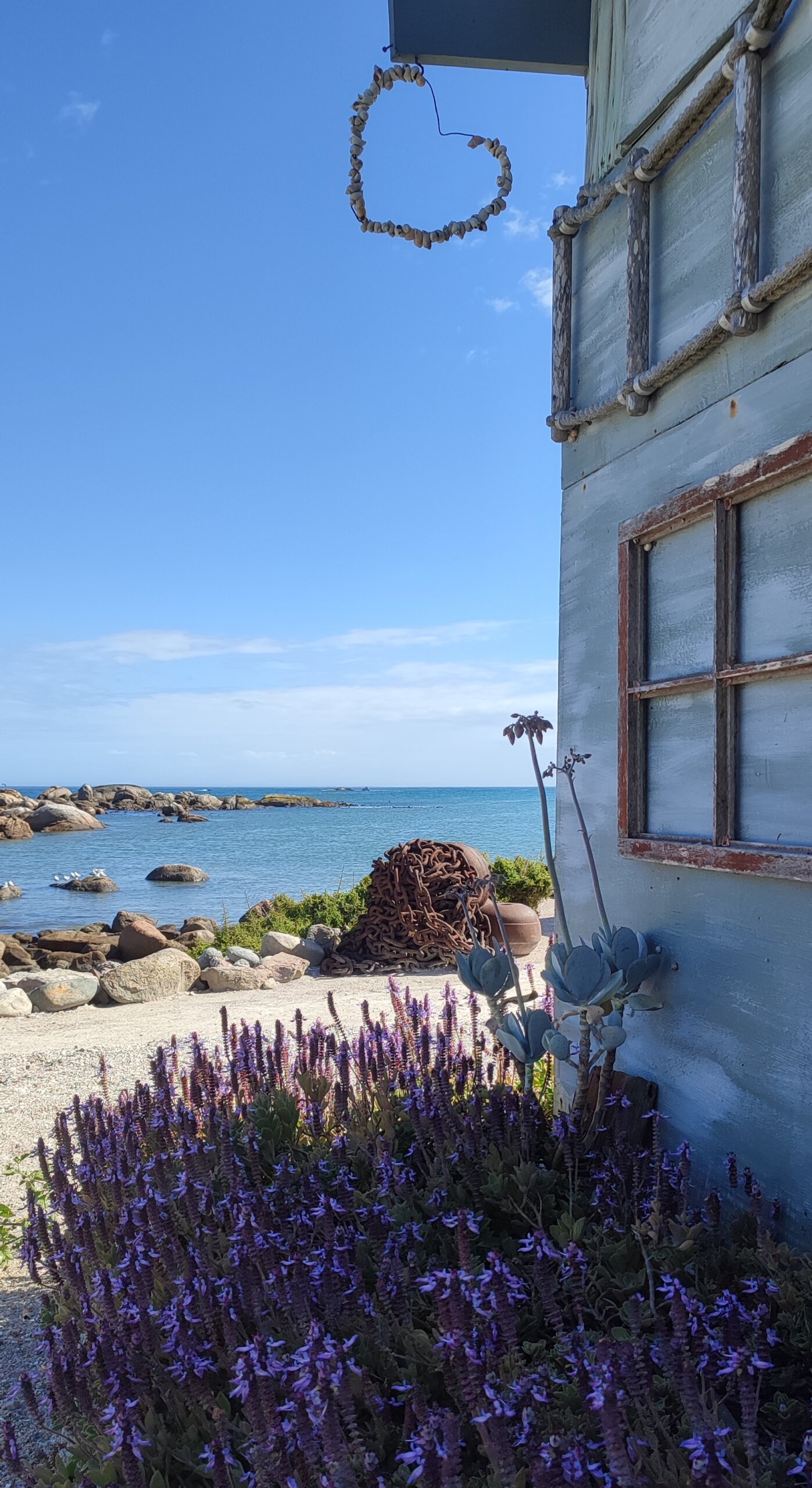
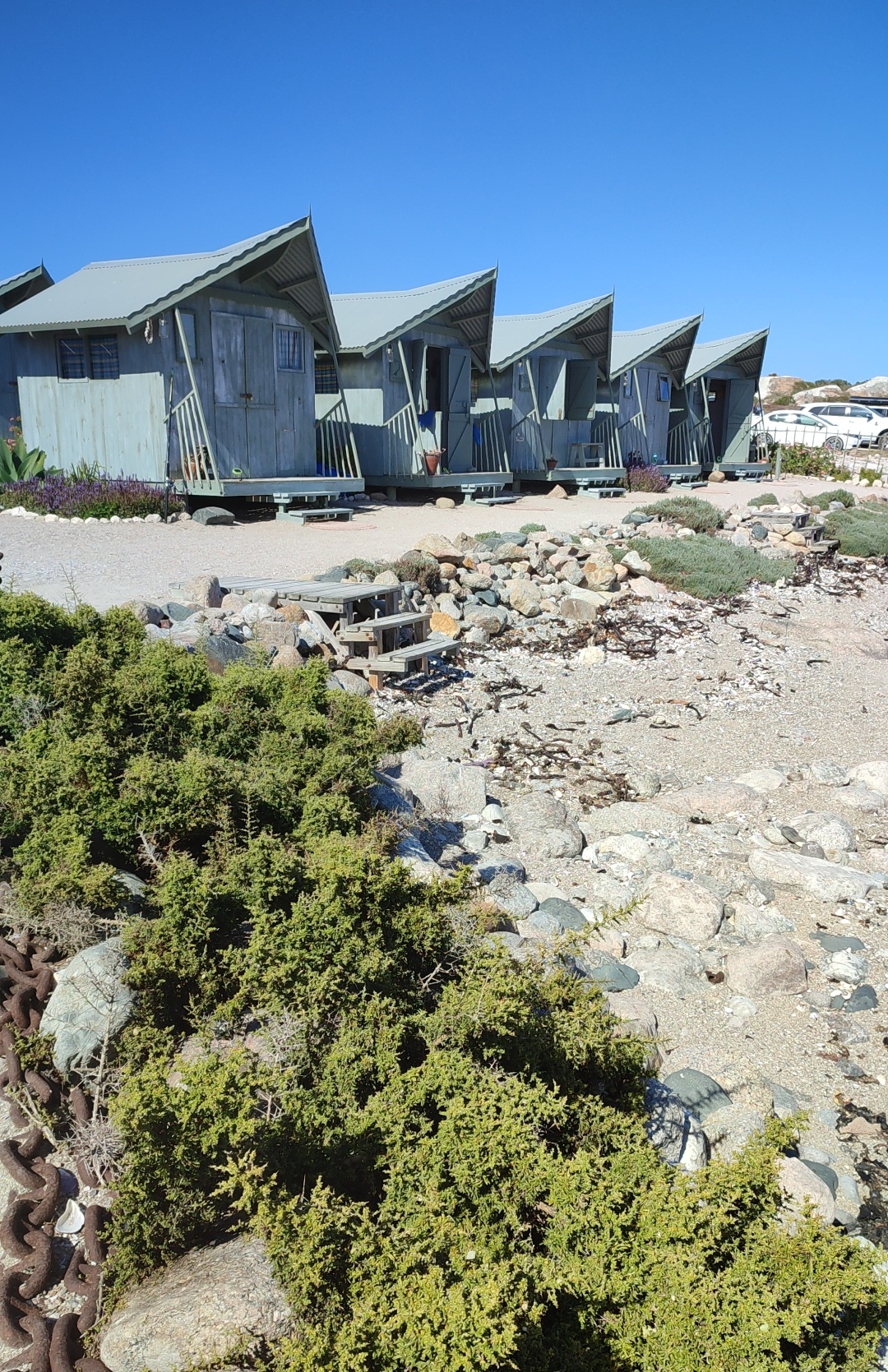
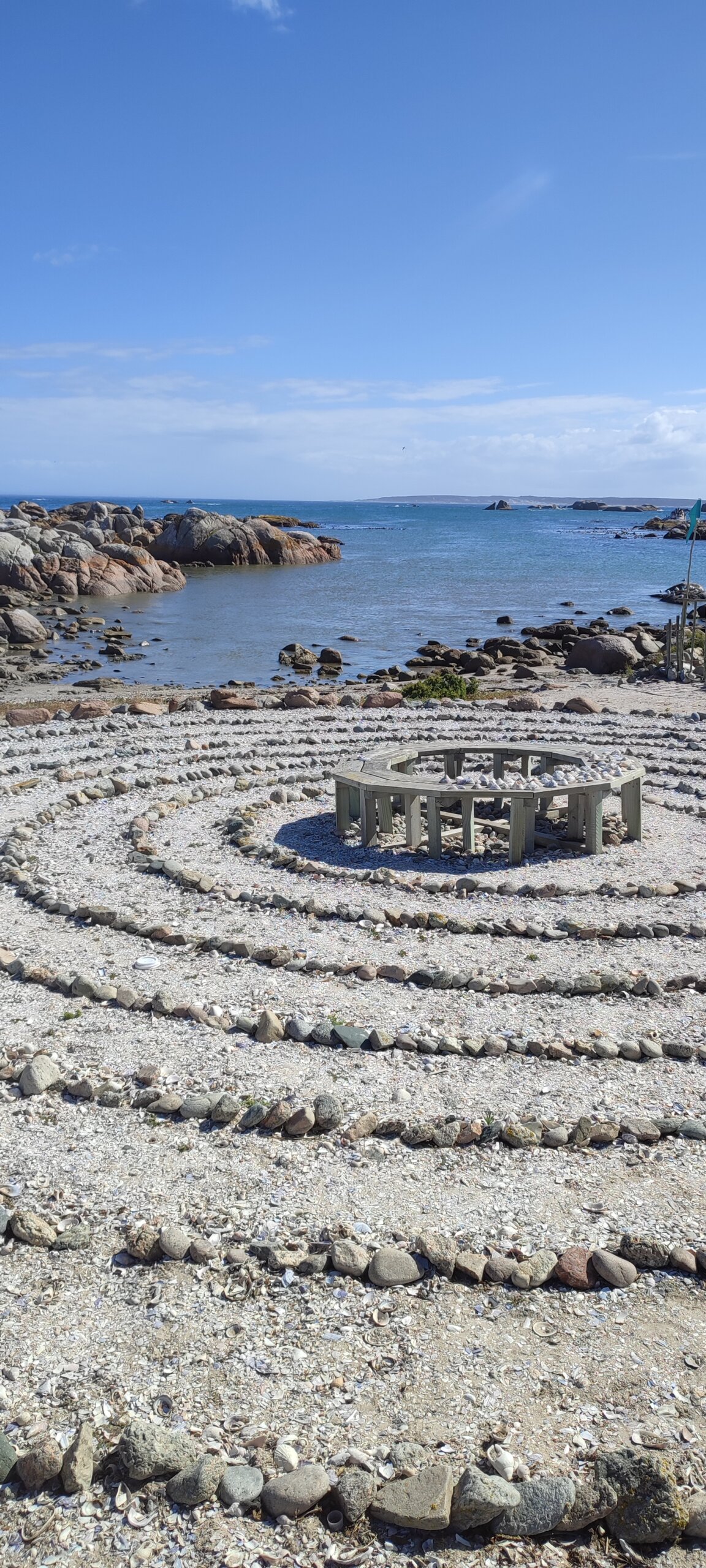
Day 7: Fat-tyre, electric biking through Columbine Nature Reserve with WOW Ebike tours
Fat-tyre, electric bikes are ideal for exploring hard-to-cycle places like the beach or sandy tracks, unless you’re Tour-de-France fit – and even then you’d be cycling your little heart out. Sometimes, you just need a little extra power and that added push to get you on your way. Thanks to the bicycles’ solar-powered electric batteries, these tours are suitable for people of any fitness level.

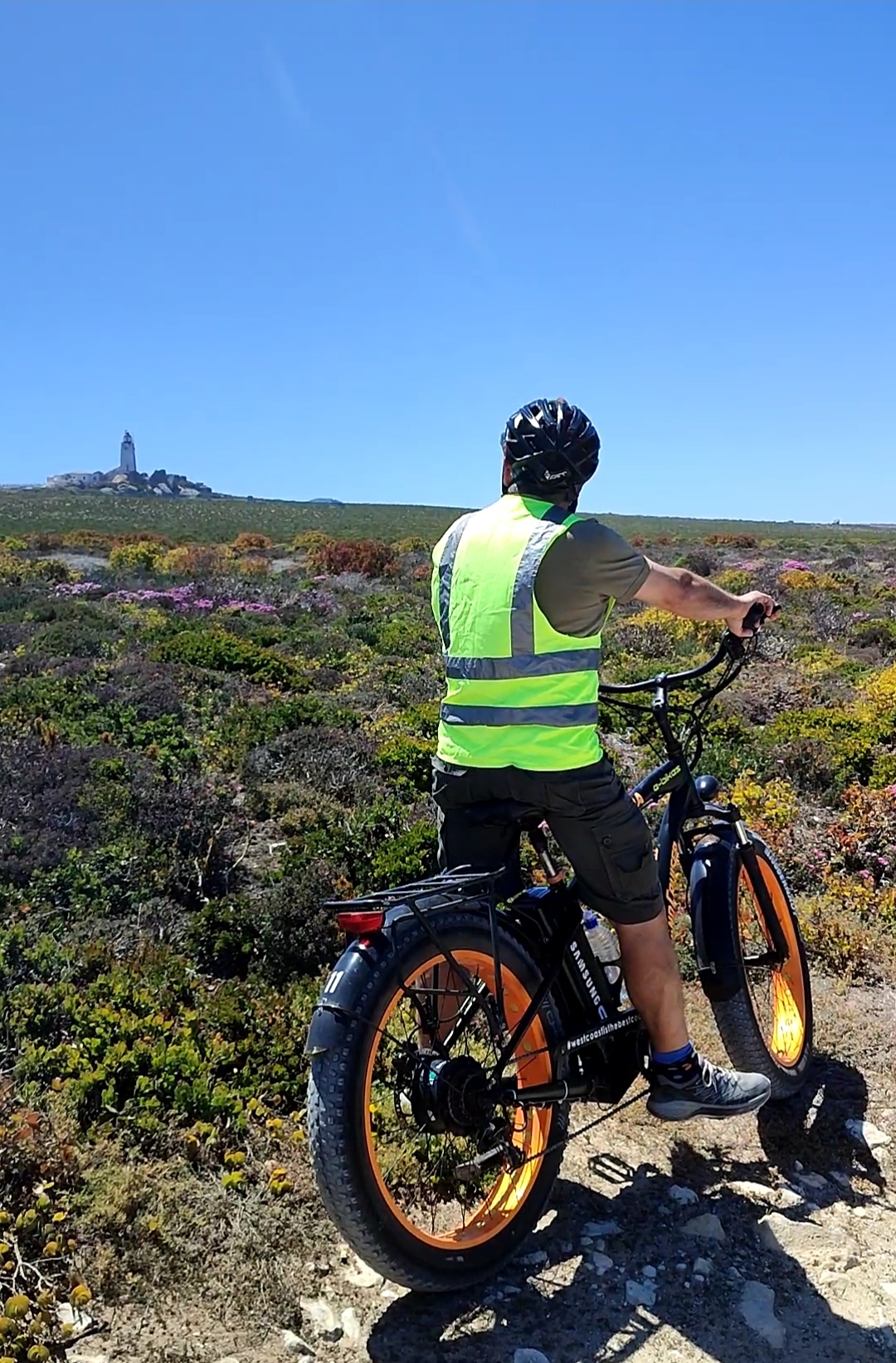
You can choose from two, 120-minute ebiking routes offered by WOW Ebike tours that leave from the Paternoster Waterfront at 10am, 1pm and 4pm daily (R550/SA citizens and R950 for international travellers). The first cycles along the picturesque Paternoster coastline at low tide and includes a stop at an oyster hatchery. The second (this is the one we did), cruises through Cape Columbine Nature Reserve and Tieties Bay, as well as past the 80-metre Cape Columbine lighthouse. The guides make stops along the way to share interesting tidbits, like that the lighthouse, which was built in 1936, is one of South Africa’s last few lighthouses to be manned by a lightkeeper and that it’s usually the first South African lighthouse to be seen by European ships, casting a light that can be seen for nearly 50km. Annelize Ziehl-Owens from WOW Ebike tours particularly recommends doing the nature reserve route in spring time, around late July to September (rainfall depending) when the spring flowers are in full bloom.

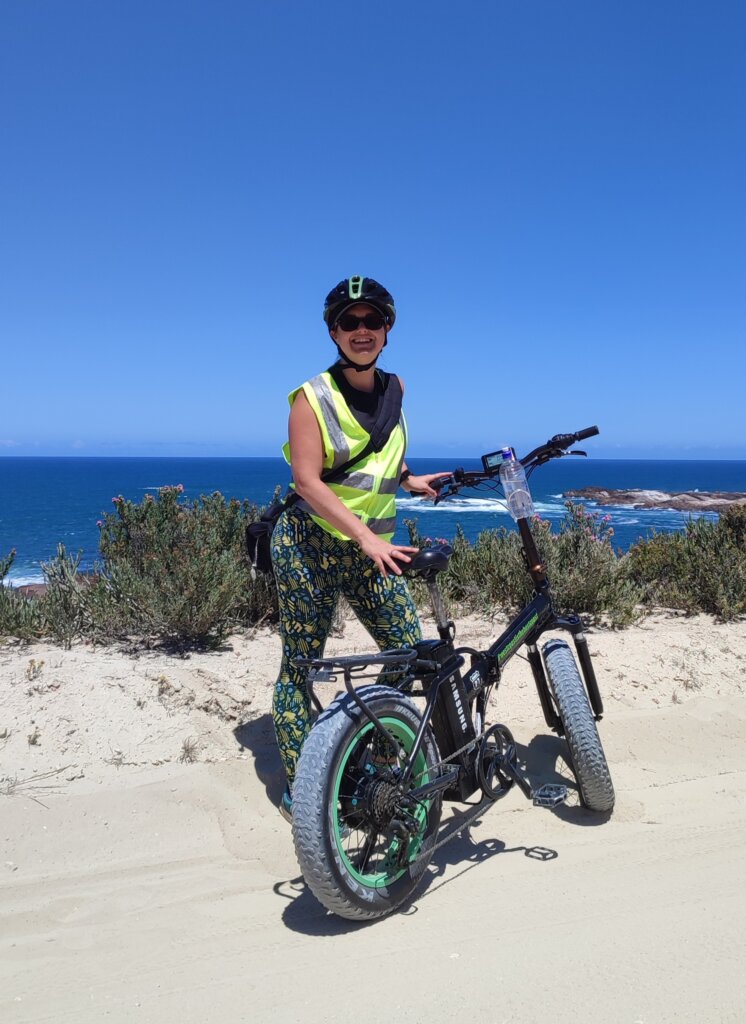
Where to stay in Paternoster: Gonana Collection
Our sea-facing room at Gonana Collection (which consists of a guesthouse and self-catering houses) opened up to an indigenous, water-wise garden that leads out onto the crescent-shaped Bekbaai Beach. This environmentally conscious guesthouse is solar-powered and completely off the grid. It uses rainwater collection tanks and a sophisticated greywater recycling system, makes minimal use of plastic, avoids the use of non-biodegradable chemicals, has a solar-heated, salt swimming pool, and supports a ‘buy local, think global’ concept.

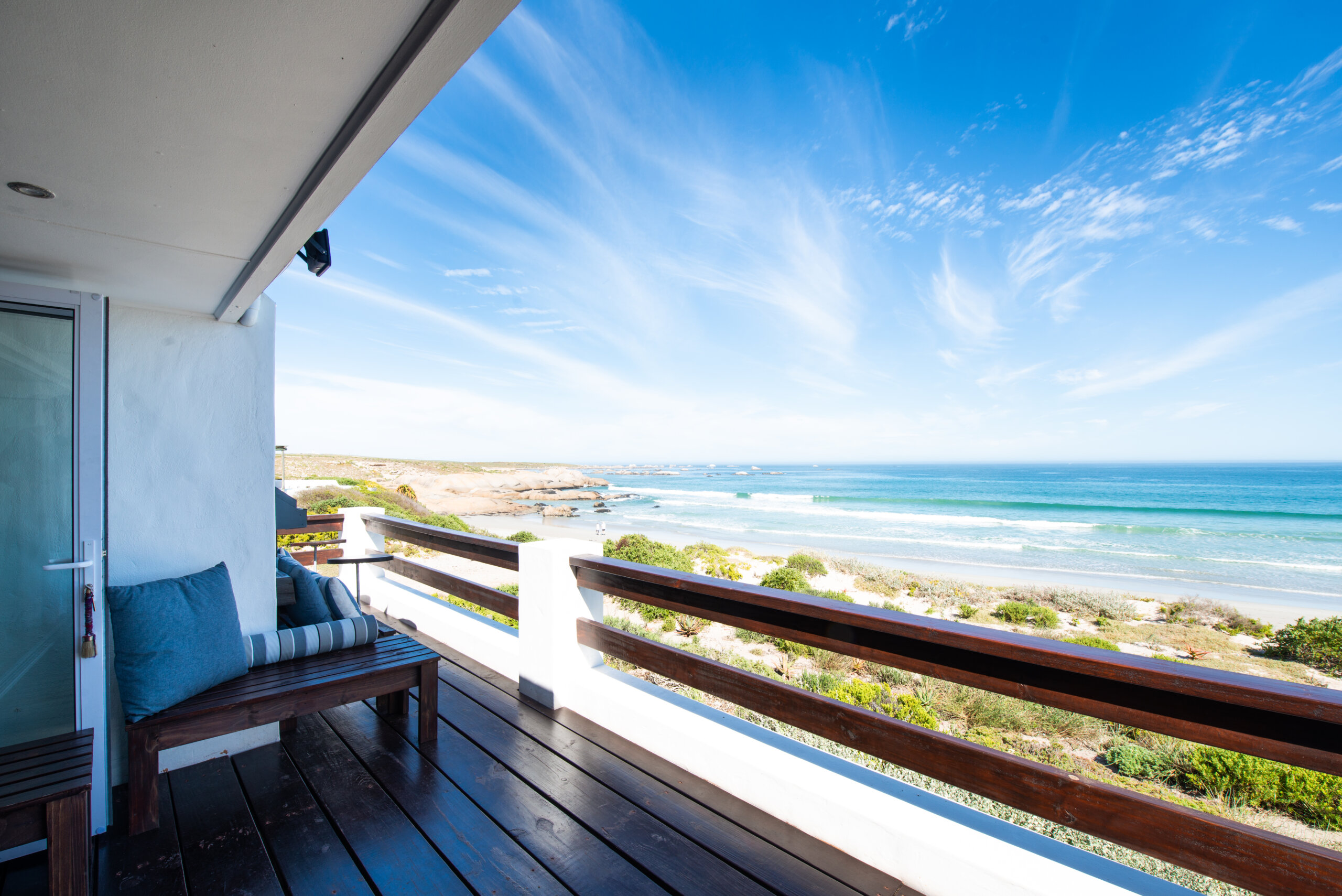

The theme of sustainability flows into the interior. The décor is all-natural – think earthy colour palettes, natural fabrics and sustainable materials throughout to give you a sense of a beachside getaway. The communal lounge with its skylights is furnished with leather couches complemented by woven leather chairs, making it an ideal retreat to unwind with a book. The dining area looks out onto full sea views. But perhaps my favourite part of staying at Gonana was the wooden balcony. It’s lined with cushioned seating and small mounted swivel tables (for your drinks, of course), which offers an all-day outdoor ‘theatre’ of the Atlantic Ocean.
Next time, we’ll stay in one of the new self-catering houses, which is ideal for families or friends travelling together. There’s the two-bedroom, four-sleeper Acacia House, and the one-bedroom, three-sleeper Aloe House. Both run on the same principles as the guesthouse and have fully-equipped kitchens, dining areas, sea-facing balconies and braai facilities. They are a street away from the guesthouse or a two-minute walk to the beach. The self-catering houses are perfect if you’re looking for pet-friendly accommodation in the West Coast, as socialised small to medium size dogs are welcome.
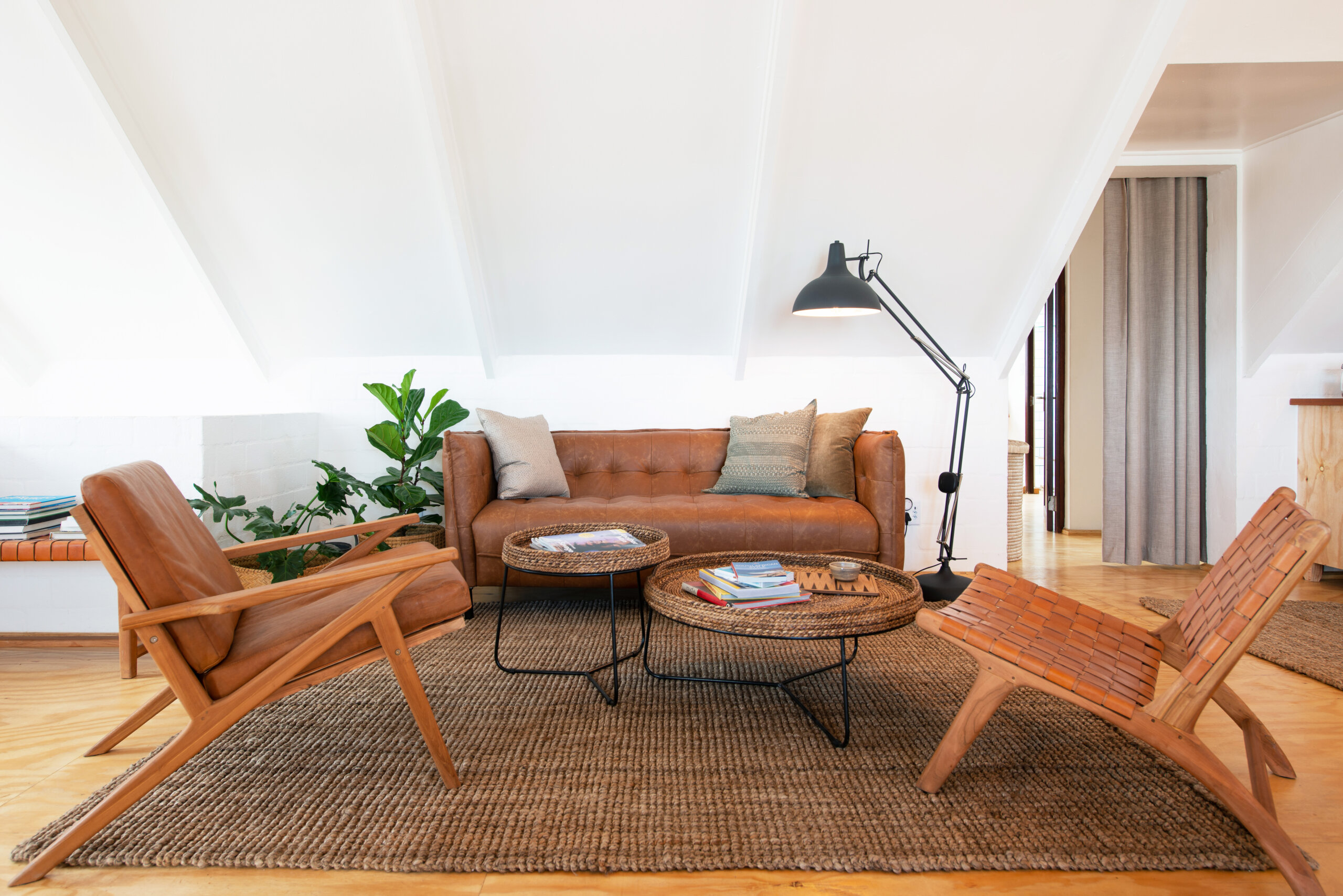


Road tripping along South Africa’s West Coast is the perfect getaway along the Western Cape’s coastline, no matter your travel style, nor whether you’re looking for a romantic breakaway, an action-packed and adventurous trip, or a sustainable holiday not too far away from Cape Town. Best of all you, you can mix and match these activities based on your interests and available time.
If you enjoyed this post, please pin it for later!

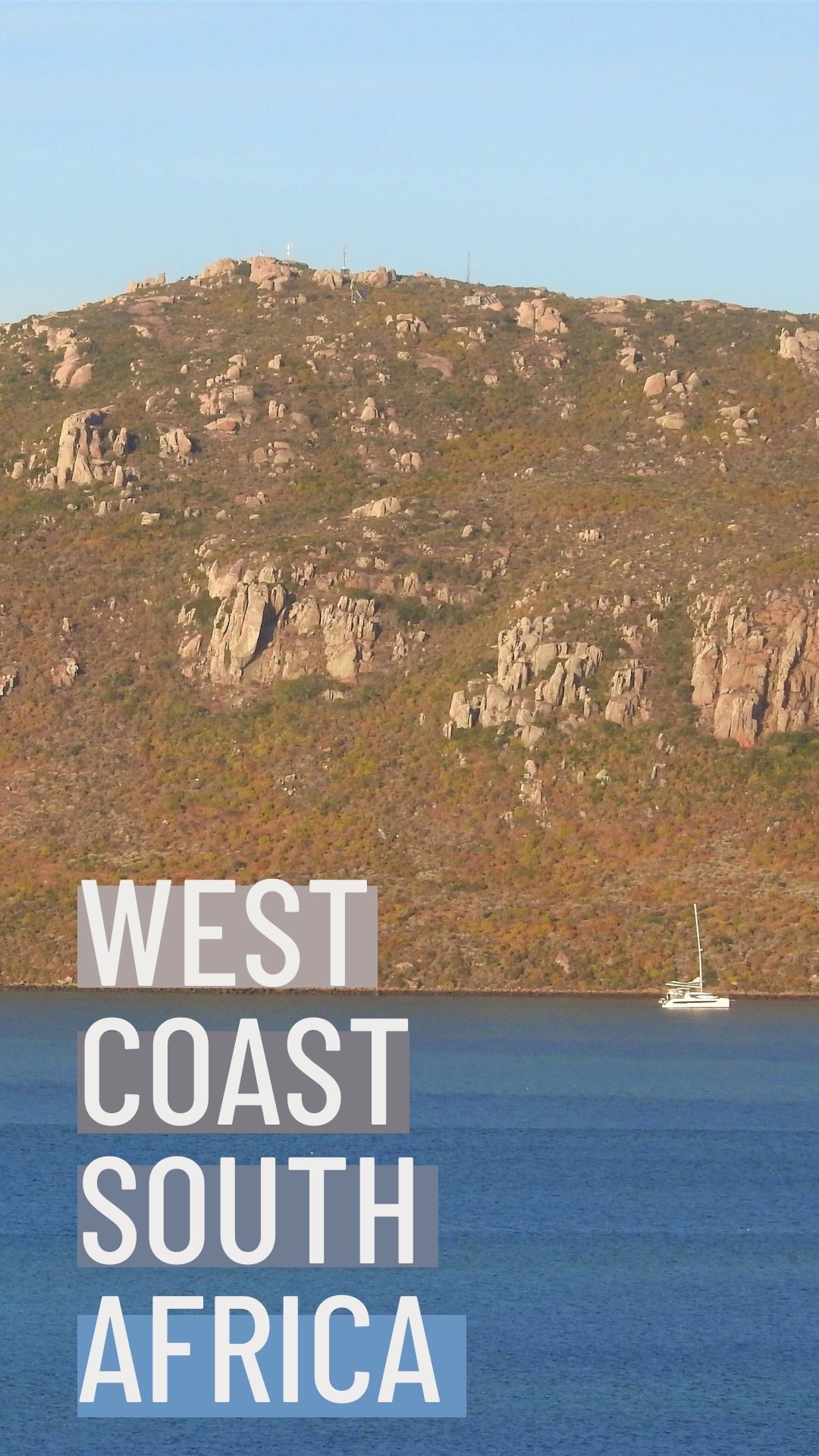
This is a sponsored blog post on behalf of the West Coast Fossil Park. All opinions are my own, but you already know that! ;)





I have enjoyed every bit of this ariticle, looking forward to a similar experience
South Africa is some really awsome travel destination , filled with losts of activities and unique places to visit . this Alist Alone is bewildering.
Very informative. Thanks!
How exciting you’re in Cape Town now! It’s supposed to be an amazing home base.
I should have made the move sooner, but now that I’m here I’m making the most of it with hiking trails, the beach, winelands right on my doorstep. Planning to take many more awesome road trips like this!
South Africa seems like such a fabulous destination! The landscapes are just gorgeous! I would love to visit one day.
A road trip on South Africa’s west coast sounds fascinating especially the archeological sites. I’d also love the whale watching. Thanks so much for the inspiration!
I’d love to visit the West Coast fossil park and Khwa Ttu. The area looks great for surfing too. I think my boyfriend will like it.
They are both definitely worth a visit! Langebaan is better known for watersports like wind and wing surfing, as well as SUPing and kayaking. Muizenberg and Blouberg are great for surfing though, as are so many other beaches around the West Coast and Western Cape.
The house boats sounds so intriguing. If I was visiting, those would be where I wanted to stay!
This is amazing! We’re coming to South Africa next year and these are some great ideas for us.
Brilliant, feel free to get in touch if you have any questions or need some more inspiration! :)
South Africa has such a beautiful landscape and parks. I didn’t really know how pretty it was. Thank you so much for sharing!
Hope you’ve added it to your bucket list for future — the Garden Route in the opposite direction along the Western Cape’s coastline is also really worth a visit.
Looks like a lovely area to visit. Thanks for putting it on my radar.
Hope you make it out this way! :)
I didn’t know about the Fossil Museum but otherwise know the area well. You have captured it beautifully.
We spent the better part of the day there as there was so much to see between the dig site and the exhibition centre (was very impressed). I feel so lucky to have gotten a behind the scenes tour of the lab where they sort through the fossils.
I wish I’d known about the San museum when I was in the area – I would have liked to visit (and eat at the restaurant!).
There’s always another time! ;) I found it very insightful and appreciate how much care and thought has been put into ensuring that the stories, history and culture of the ‘First people’ are truthfully and fairly represented.